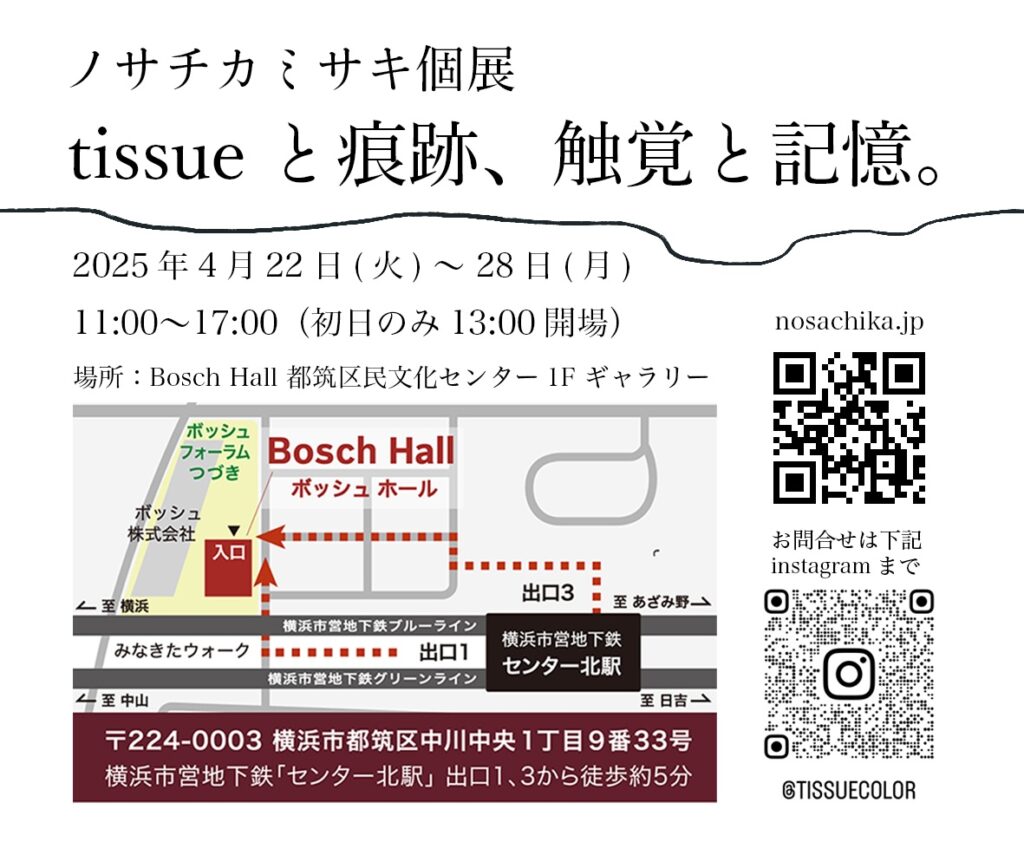tissueと痕跡、触覚と記憶。
Tissue, Traces, Tactility, and Memory.
数年間考えていた。
“tissue”という素材から始まった制作活動。
自分にとって最も大切な感覚は“触覚”なのだと気づいたこと。
パリでの出来事の中で、まるで人生の伏線が回収されるように“痕跡”という言葉に出会ったこと。
そして、セラピストとして人にふれる中で、“触覚と記憶”の関係に強く惹かれるようになったこと。
tissue、触覚、痕跡、記憶――それぞれの点が、どう繋がっていくのか。
その問いに対して、今の自分なりの答えを出してみようと思った。
For several years, I’ve been thinking about these four words. My creative journey began with the material “tissue.” I came to realize that “touch” is the most essential sense for me. While in Paris, I encountered the word “trace” in a moment that felt like a resolution to a long-held thread in my life. And as a therapist, I’ve grown deeply interested in the relationship between tactility and memory.
Tissue, tactility, traces, memory―how do these individual points connect?
This work is an attempt to explore and express my current answer to that question.

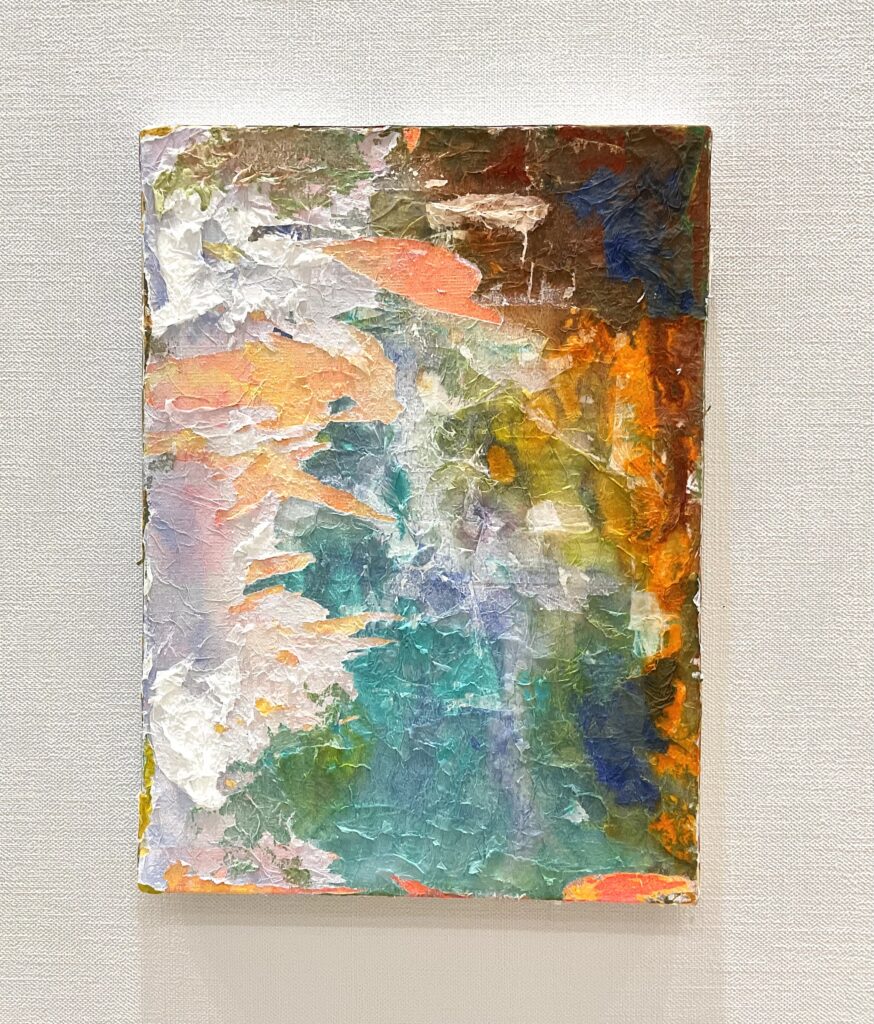
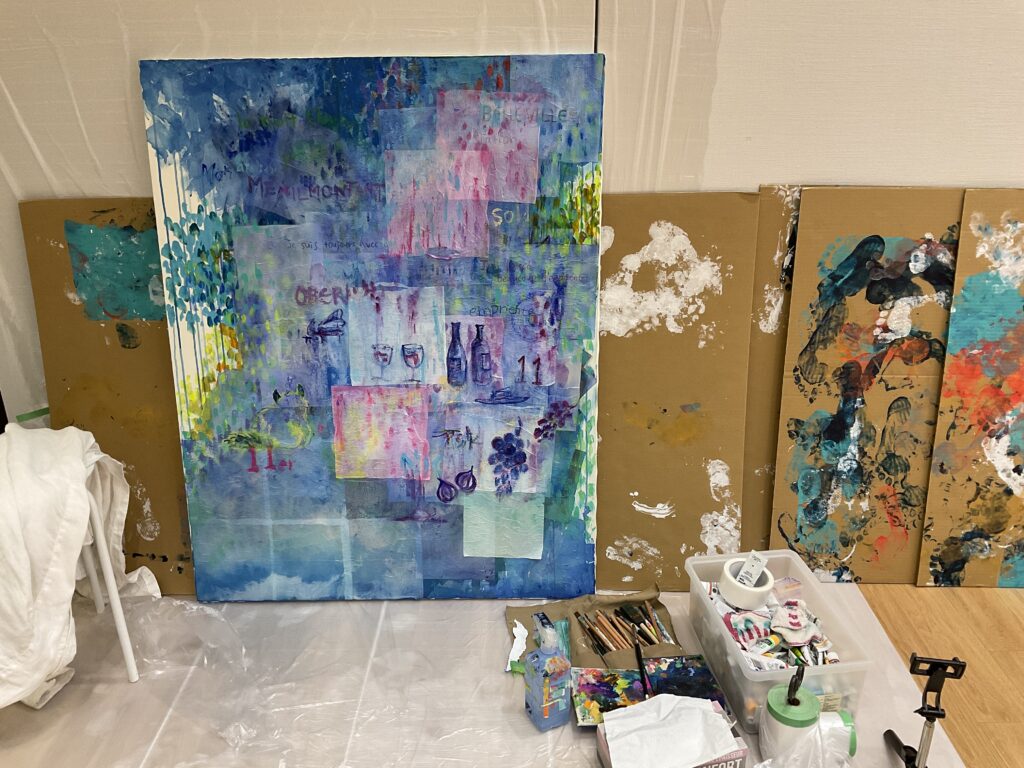
tissuecolor
2016年から、ティッシュで色を重ねる独自の技法を “tissuecolor®︎” と名付け、制作を続けている。きっかけは、仕事に疲れ、心の整理のために描いていた夜。混沌とした画面にティッシュを重ねた瞬間、ふわっと優しさが生まれ、心が軽くなるのを感じたのが始まりだった。以後、ティッシュを貼る、重ねる、水を含ませるという行為は、自分と向き合う時間になり、やがてそれは「記憶を塗り重ねる」ような感覚に変わっていった。忘れられない記憶も、繰り返し重ねることで、まるで「手当て」をしているように和らいでいく。この“手触り”の感覚が、私の作品における重要なテーマになっている。
tissuecolor
Since 2016, I have been creating works using my original technique called tissuecolor®︎, which involves layering and coloring with tissue paper. It all began one night when I was emotionally exhausted from work and turned to painting as a way to process my feelings. The canvas I painted was chaotic, until I instinctively placed a tissue over it. The moment I did, the harshness softened, and I felt a sense of relief. From that experience, the act of applying, layering, and wetting tissue became a meditative process―one that gradually began to feel like layering memories. Even painful memories, when layered repeatedly, began to soften, as if I were gently tending to them. This sense of “touch” has since become a central theme in my work.
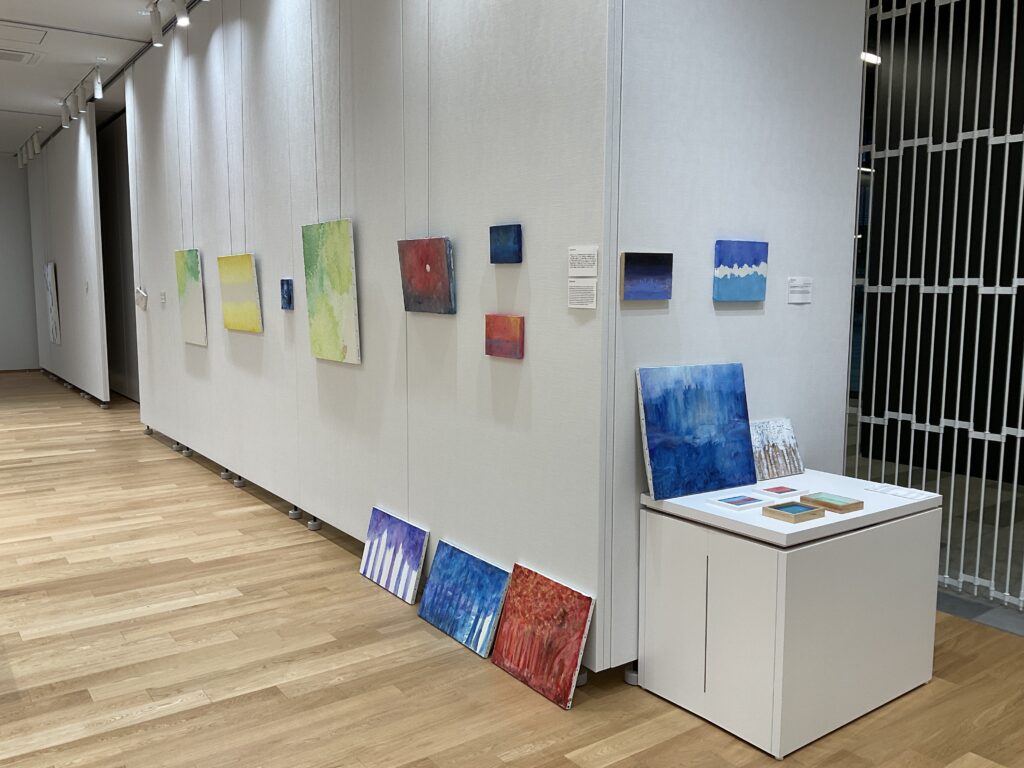
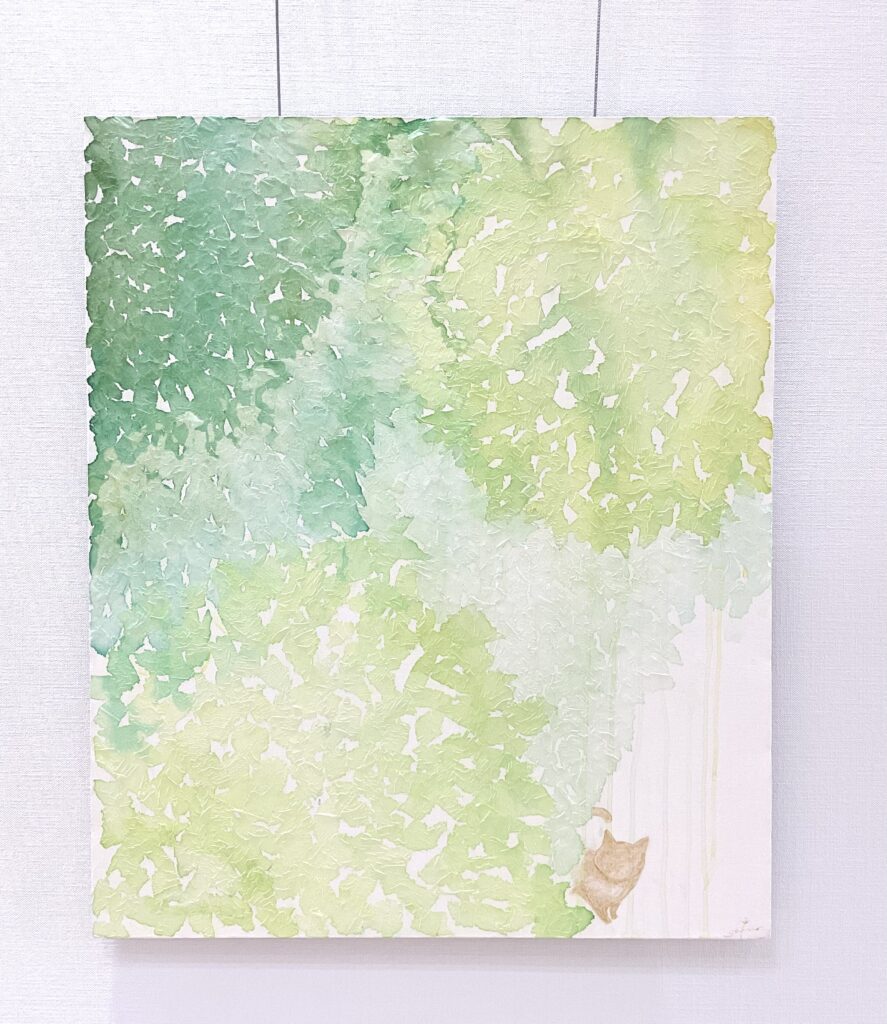
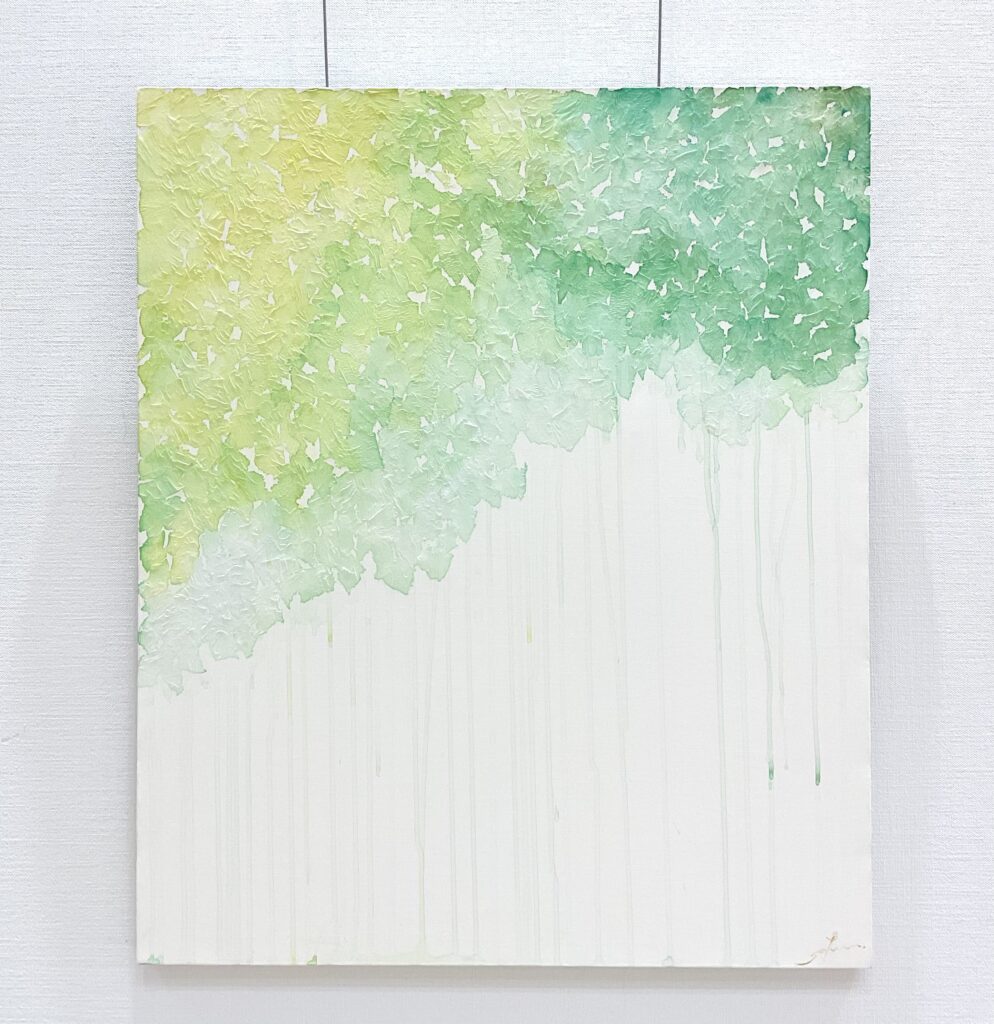
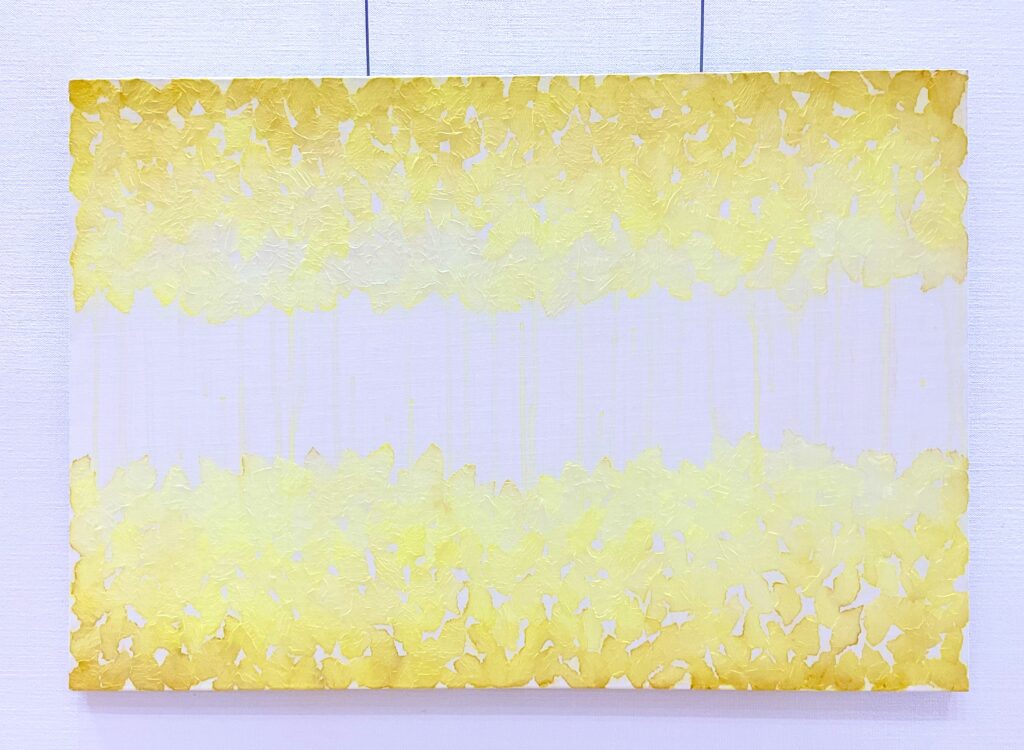
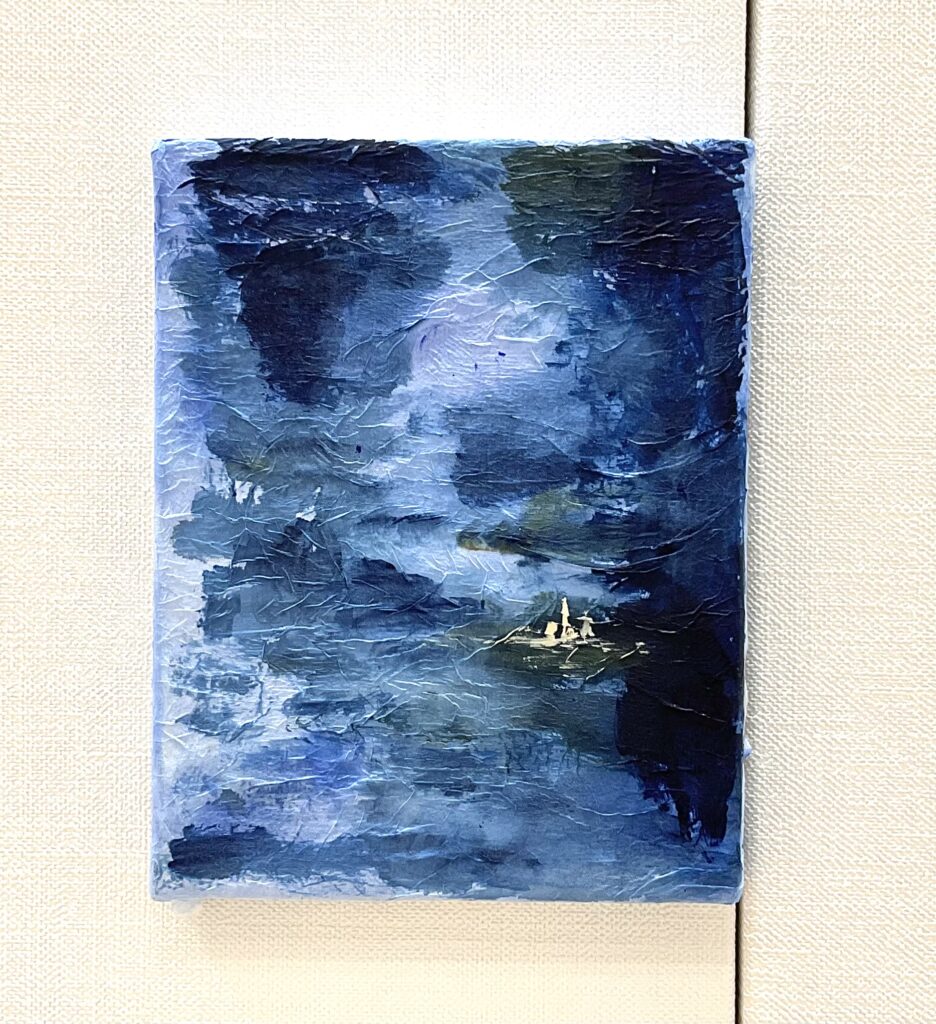
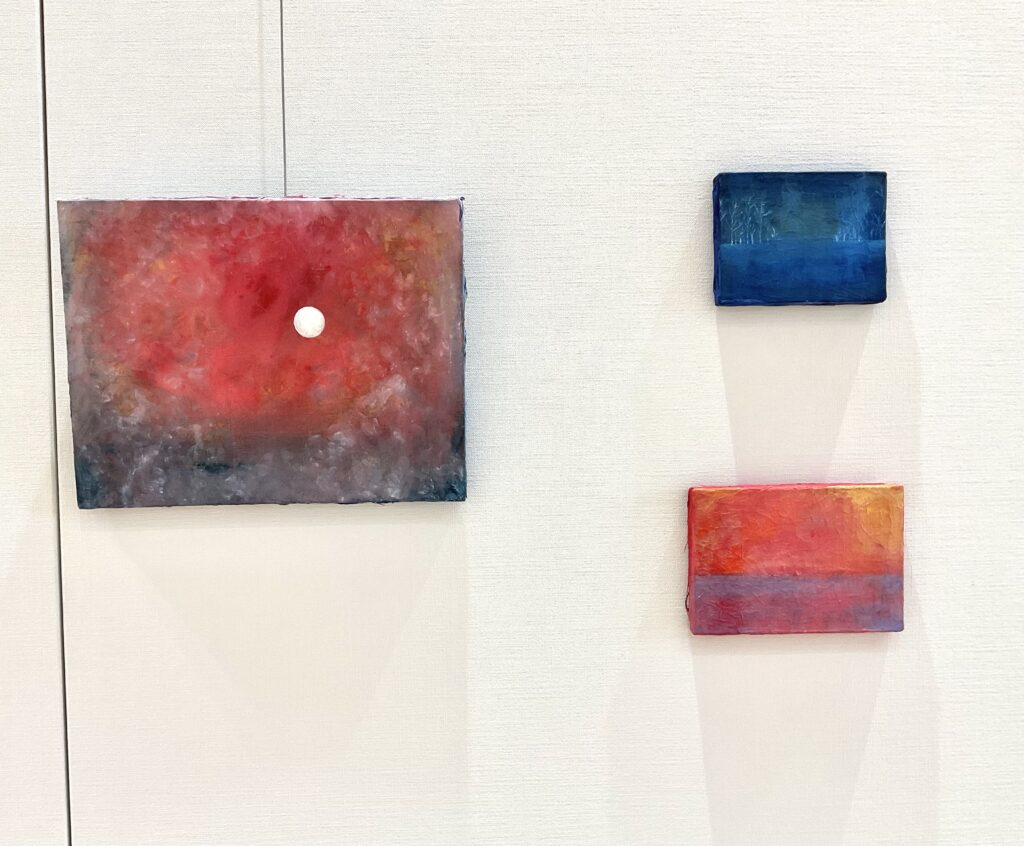
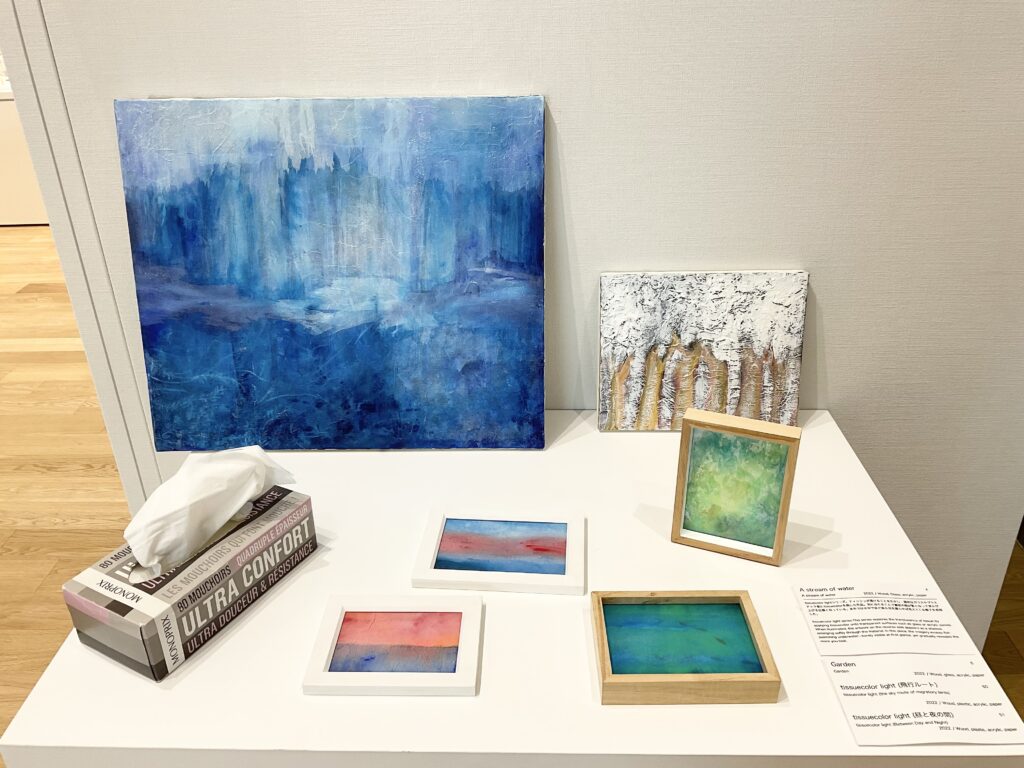
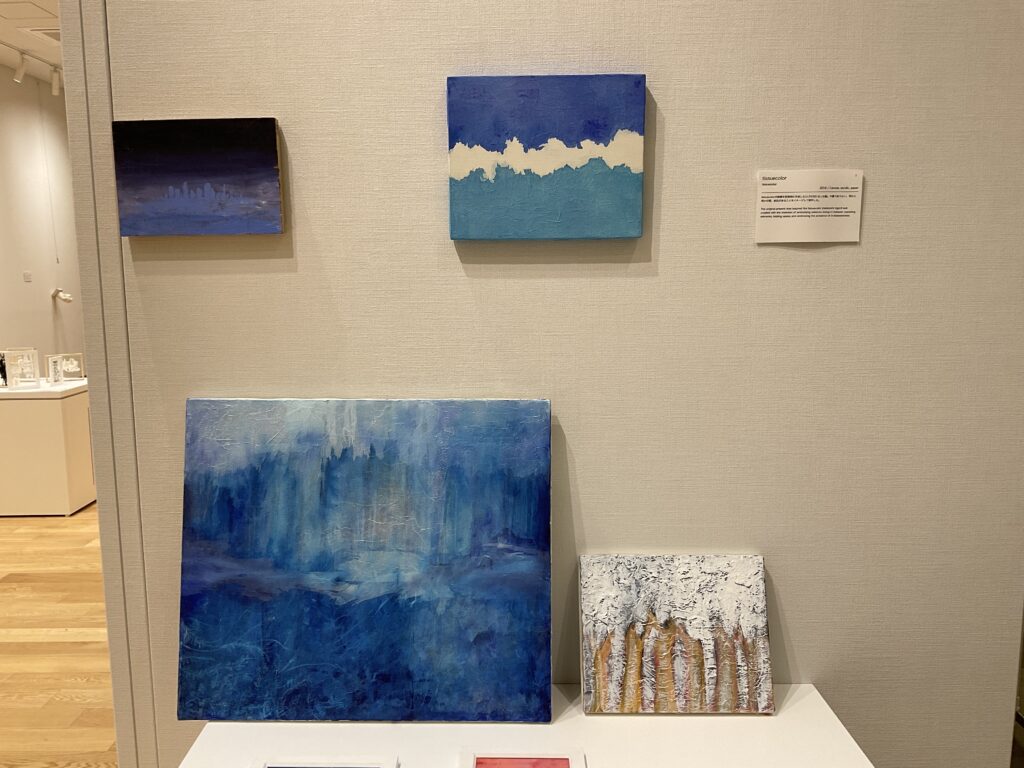
tissueの意味を問い直す
はじまりは、身近な素材であるティッシュをキャンバスに貼ったことだった。それがやがて、私の作品におけるアイデンティティとなった「tissue」へとつながっていった。パリで見かけた「tissu」という看板の文字をきっかけに、私は「tissue」という言葉に多くの意味があることを知った。語源は「織られたもの」。紙としてのティッシュだけでなく、布や細胞組織といった意味も持っている。
そもそも「tissue」とは何か?
その問いに、もう一度立ち返ってみようと思った。
Reconsidering the Meaning of “Tissue”
It all began with the simple act of applying tissue paper―an everyday material―onto canvas. Over time, that act evolved into an essential part of my artistic identity: “tissue.” While in Paris, I came across the word tissu on a sign, and I realized that “tissue” holds multiple meanings. Its origin lies in the idea of something “woven.” Not only does it refer to tissue paper, but also to fabric and even cellular structures.
What does “tissue” truly mean?
I decided to return to that fundamental question and explore it once again.
作品説明 / Artwork description
https://nosachika.jp/rtmot
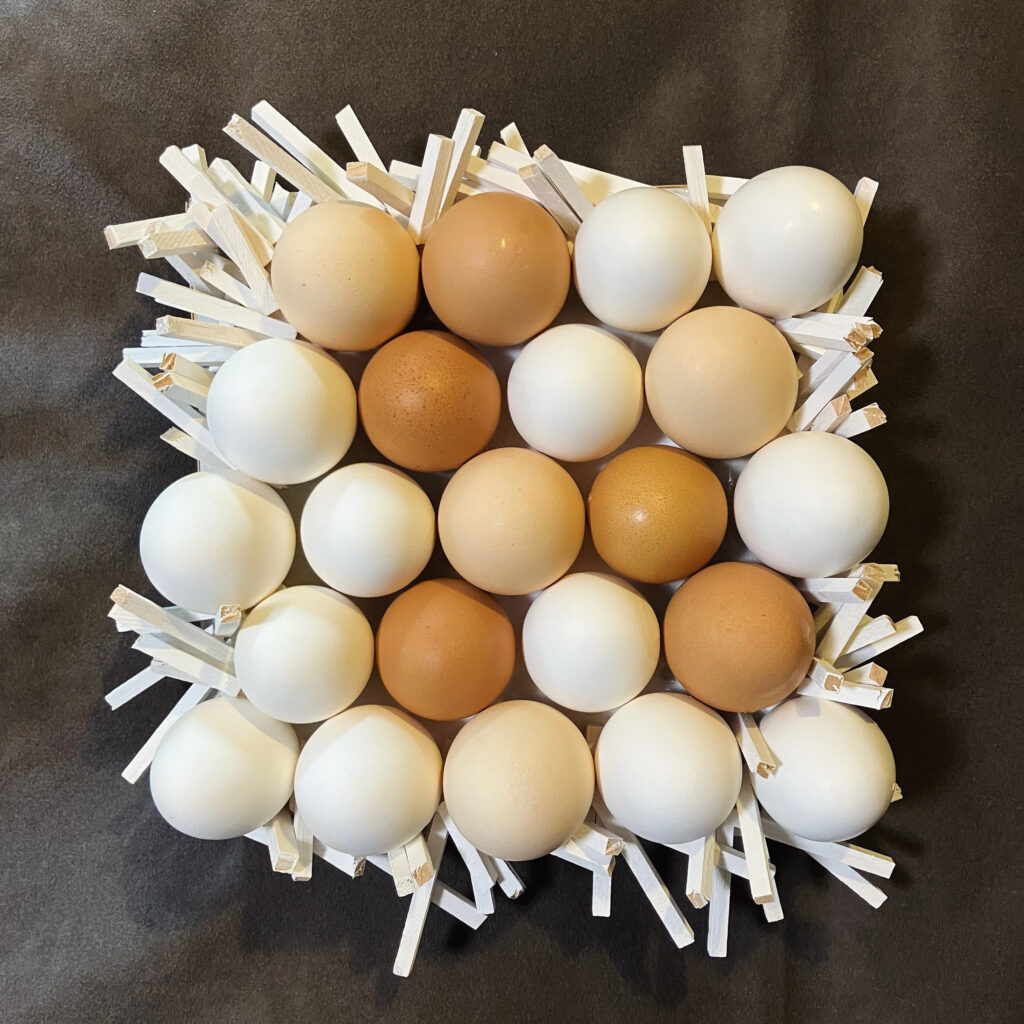
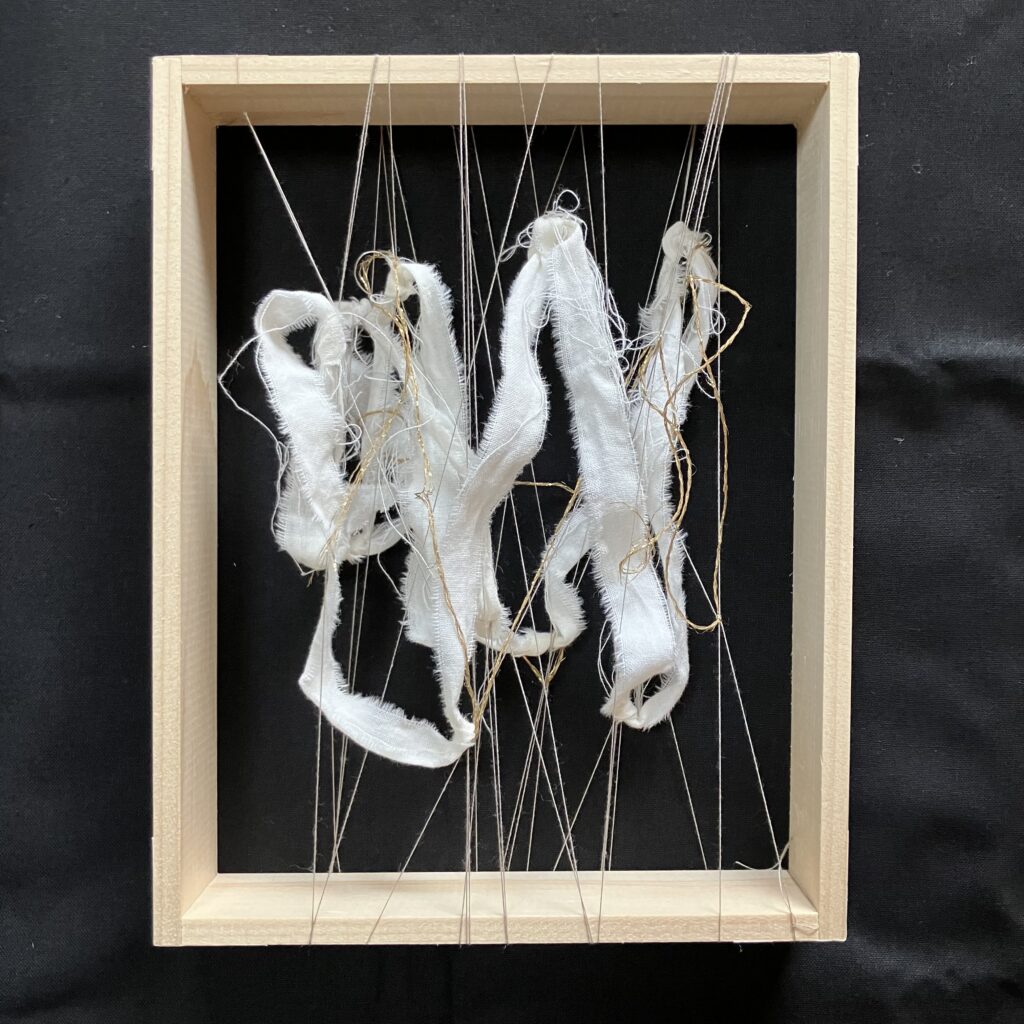
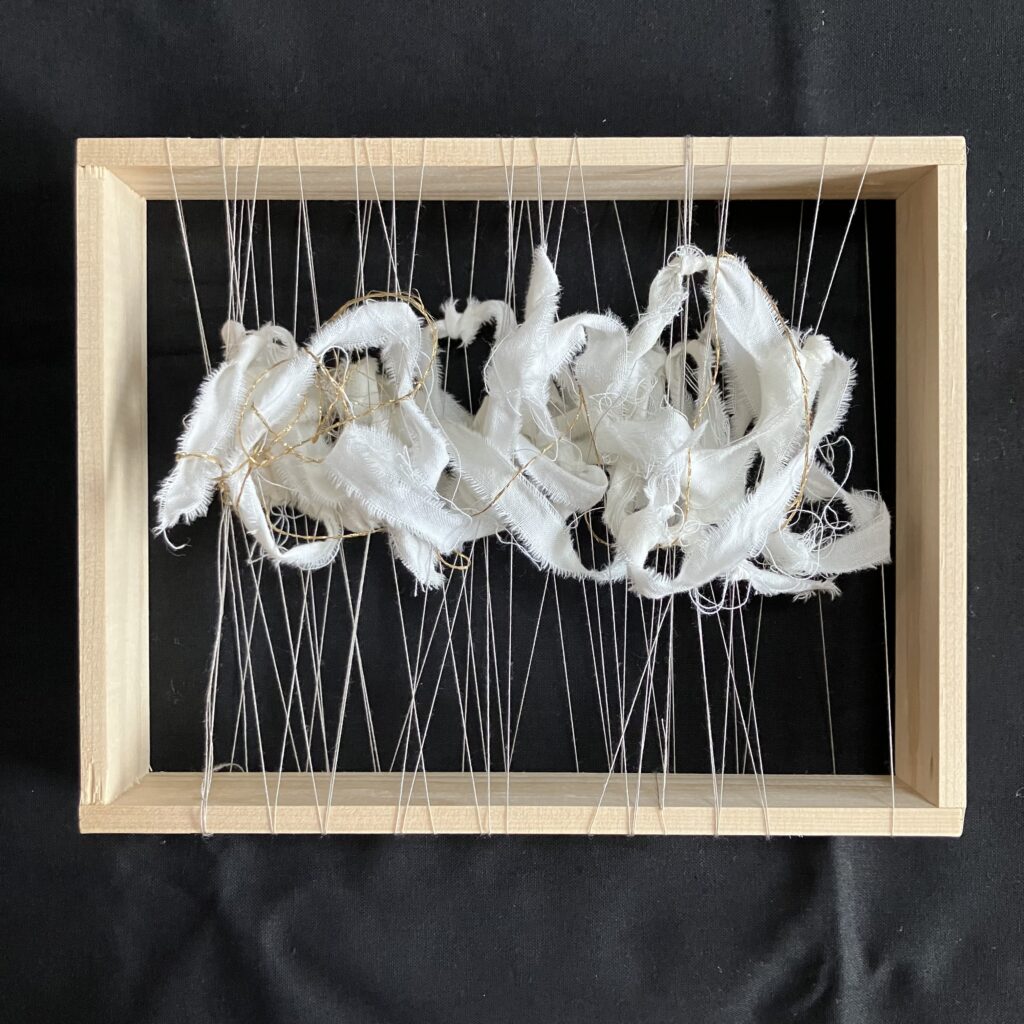
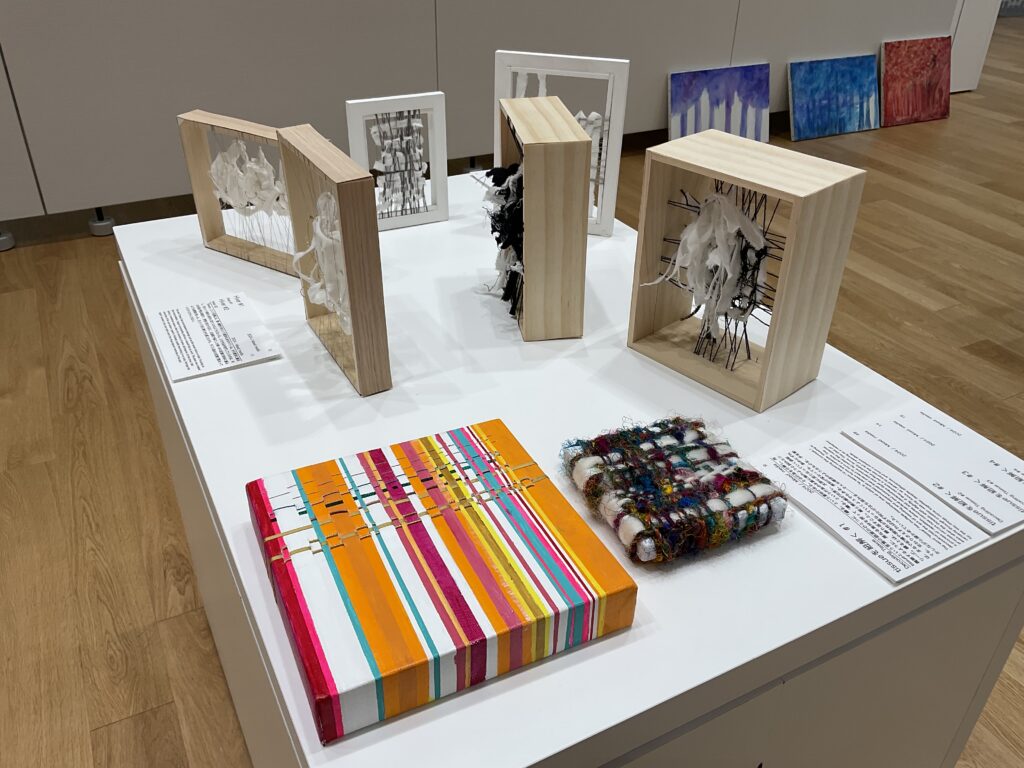


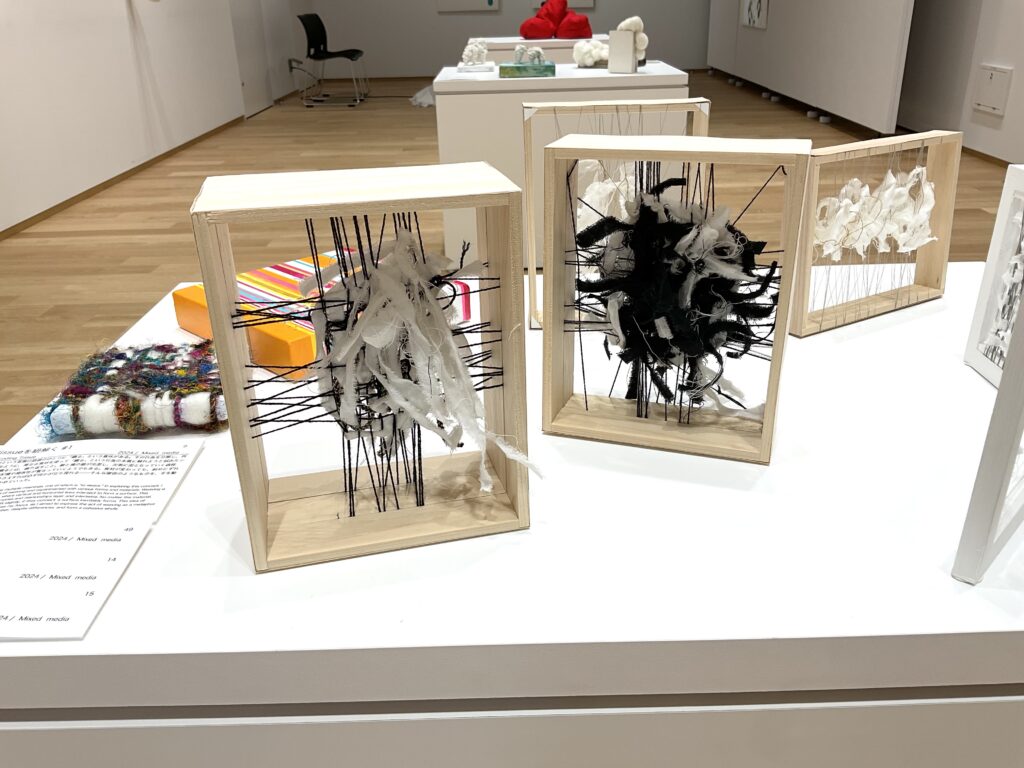
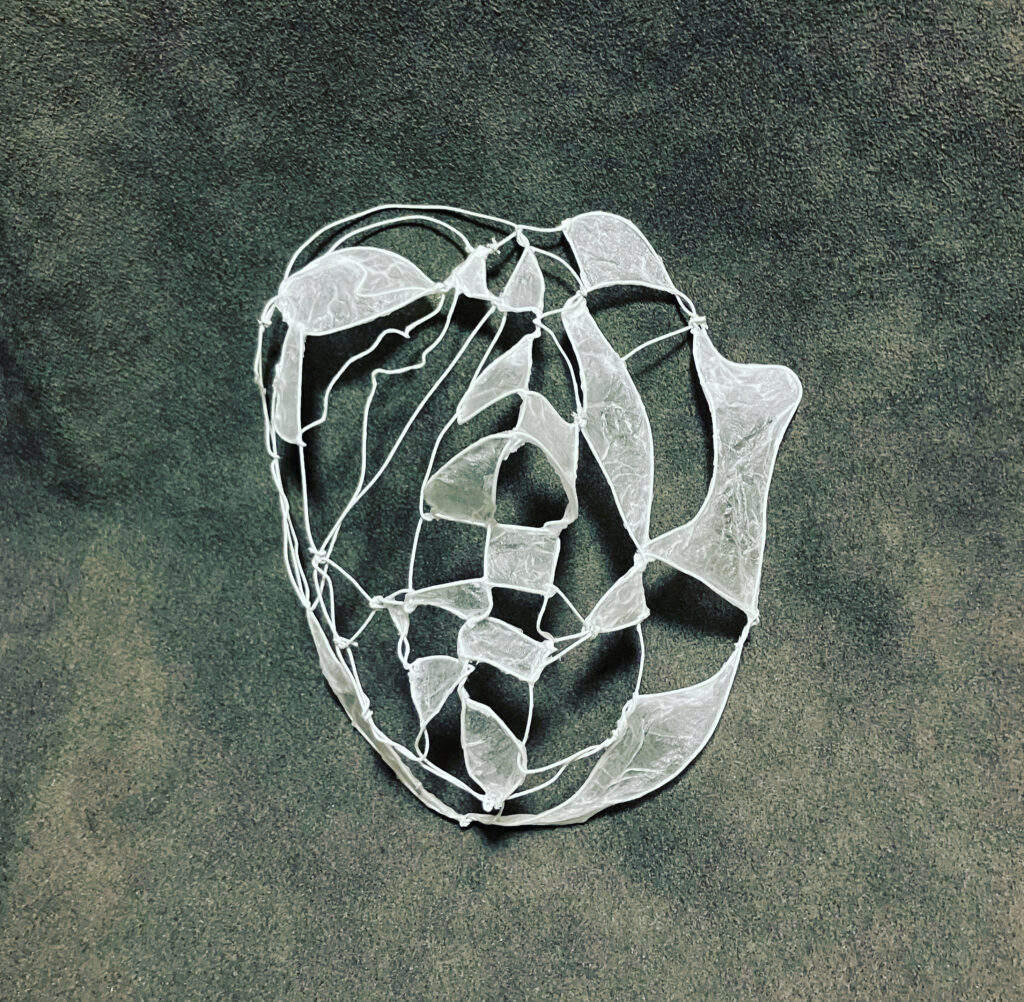
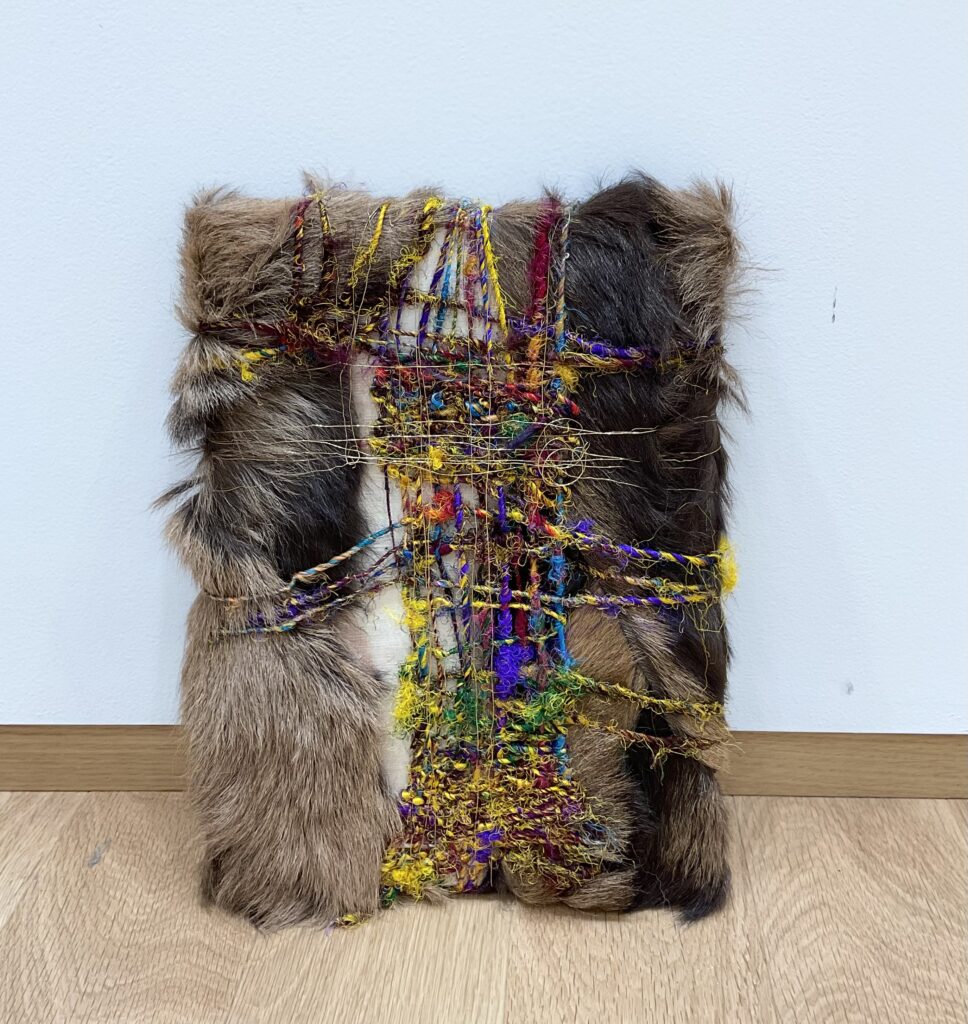
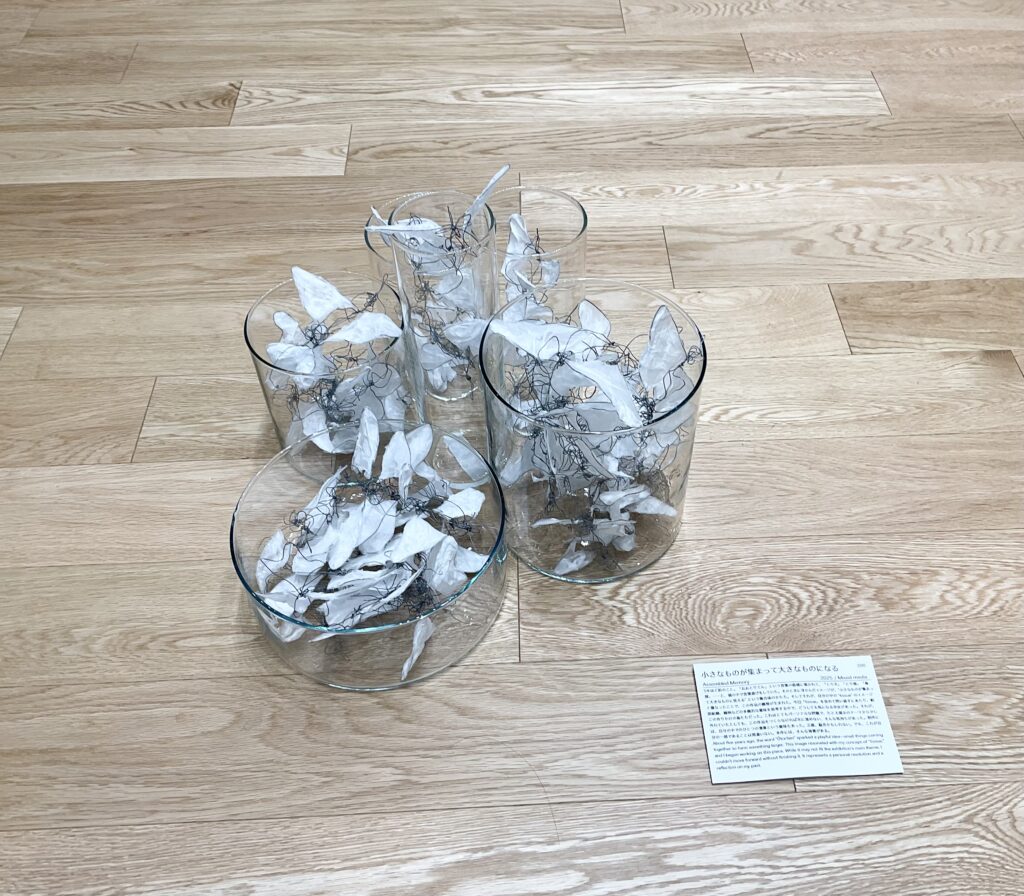
※本作は本当はつるしたかった作品。展示場所求む・・・!
tissueと痕跡
パリの街中で見た、何層にも重ねられた広告の壁。その風景は、時間の蓄積や場所の記憶を感じさせるもので、私の印象に強く残っている。ティッシュを何層にも貼り重ねたキャンバスの表面を剥がしていると、ふとその記憶がよみがえった。
ティッシュを貼る、重ねる、剥がすというプロセスは、私にとって記憶と現実の積み重ねそのものである。一度貼ったものを剥がすことで、過去に描かれた色や形が現れ、自分の過去に触れているような感覚が生まれる。その痕跡をたどる行為は、記憶の層をめくり、可視化する試みでもある。
Tissue and Its Traces
In the streets of Paris, I once saw a wall layered with countless posters―each one pasted over the last, creating a surface that held the weight of time and memory. That image left a strong impression on me. As I peeled back layers of tissue I had glued onto a canvas, that memory came rushing back.
For me, the act of layering and then removing tissue symbolizes the accumulation of memories―of lived experiences. When I peel back what I once applied, colors and shapes from the past emerge, and I feel as though I’m touching my own history. This process of layering, removing, and revealing becomes a way of tracing memory, of making its traces visible.
作品説明 / Artwork description
https://nosachika.jp/rtmot

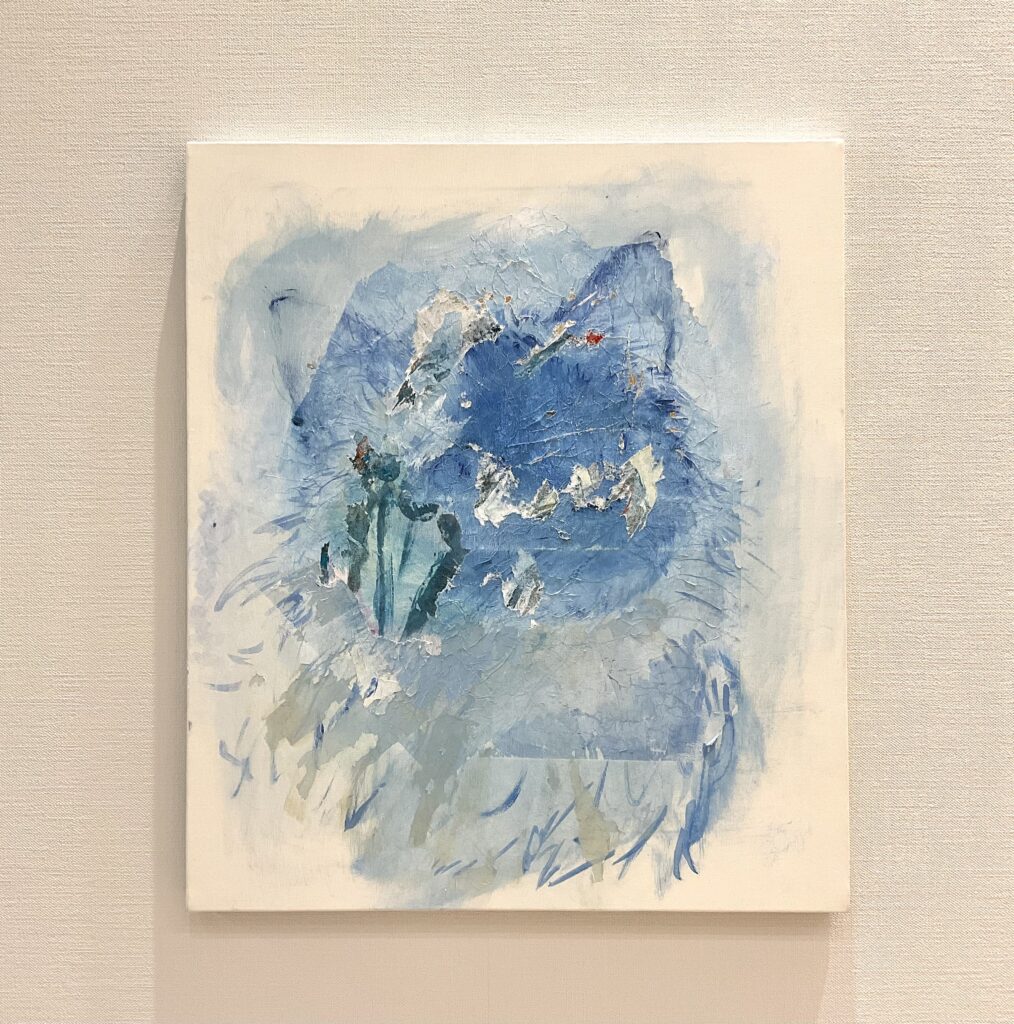
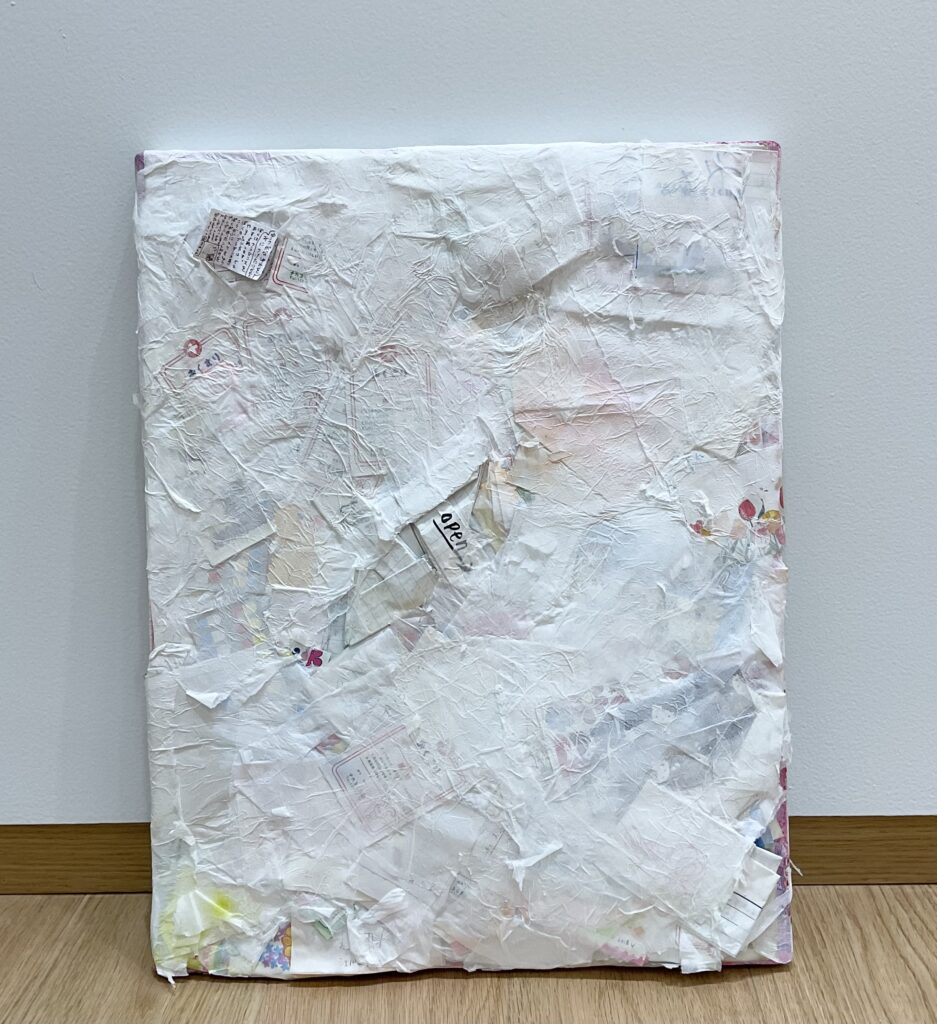
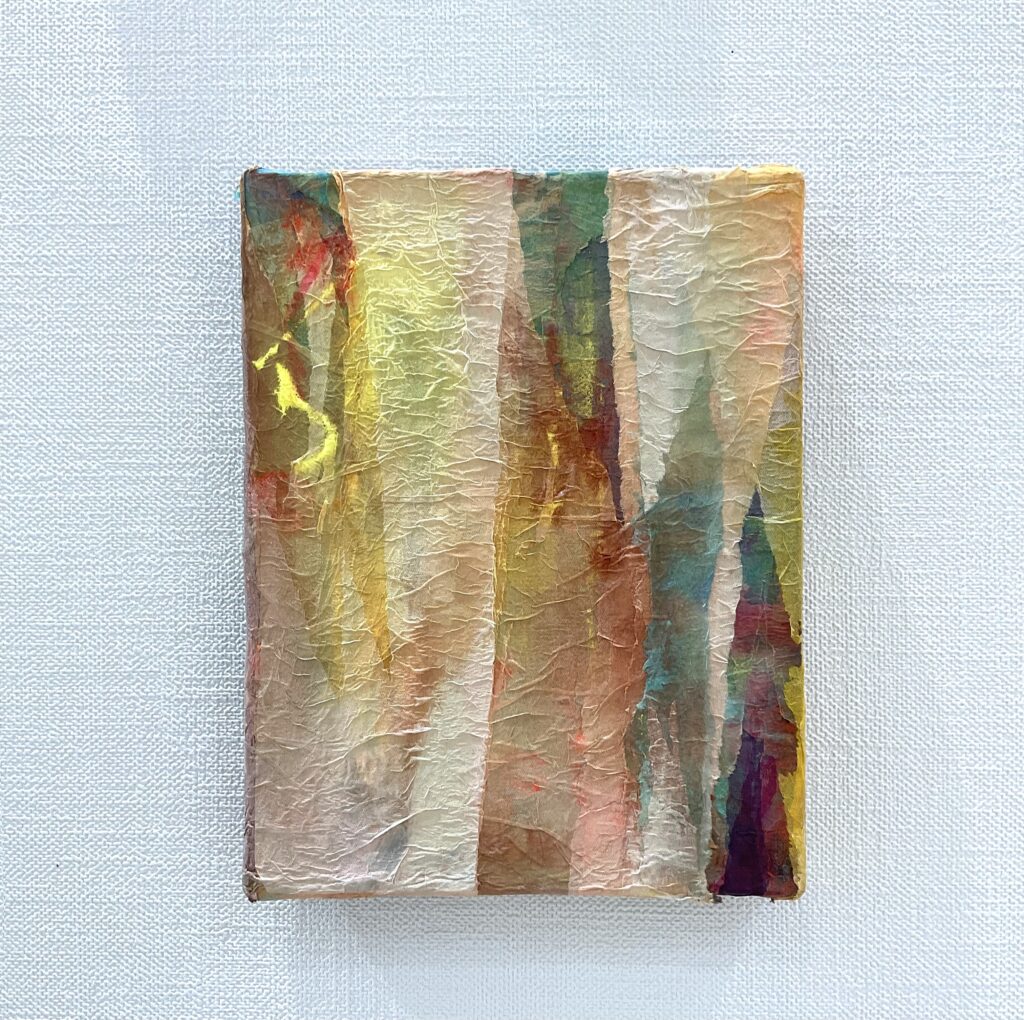
tissueと痕跡
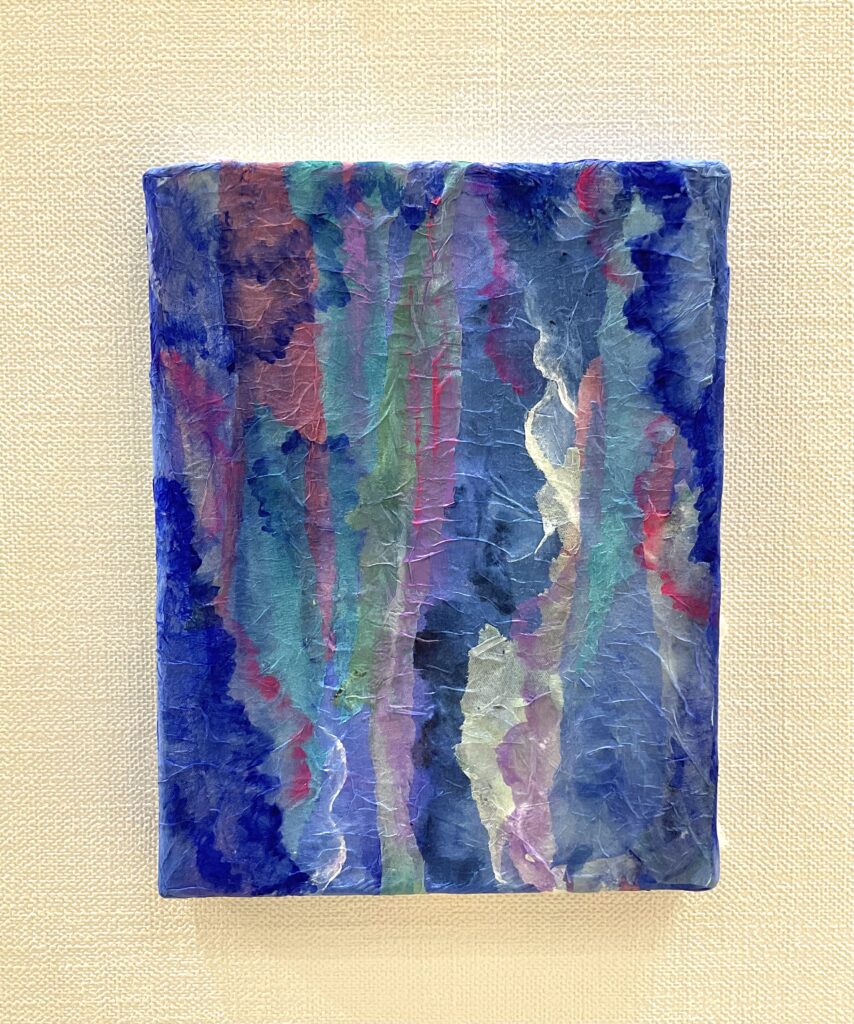
tissueと痕跡
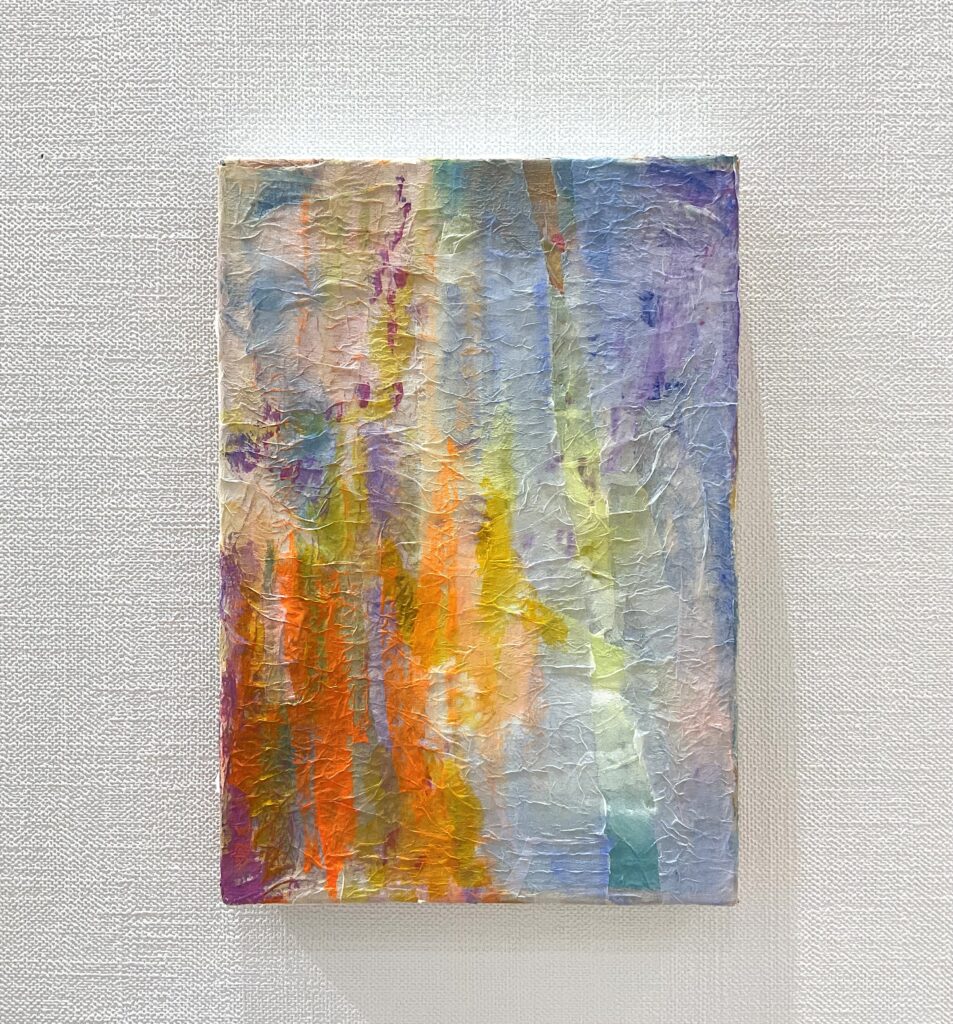
tissueと痕跡
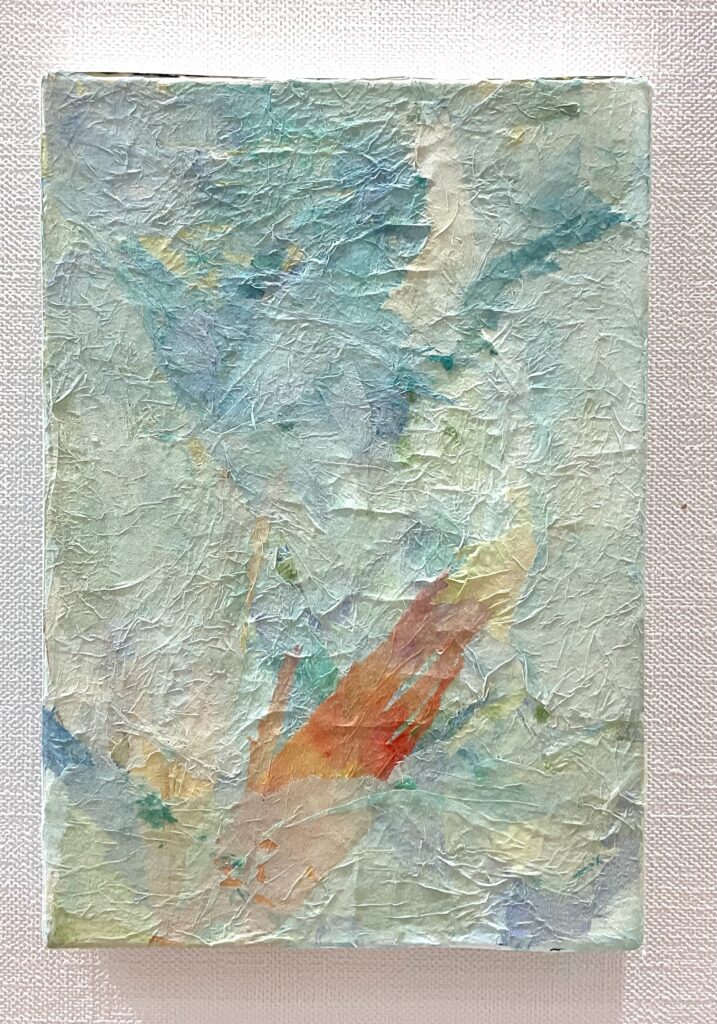
tissueと痕跡
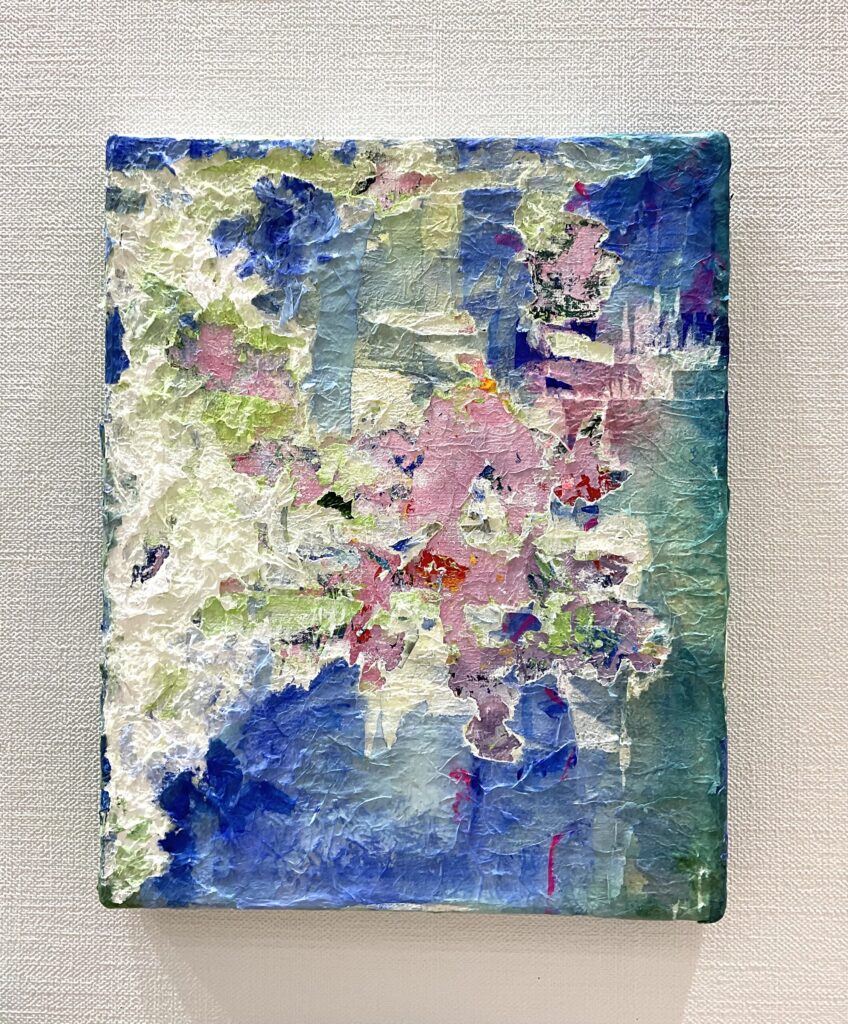
tissueと痕跡
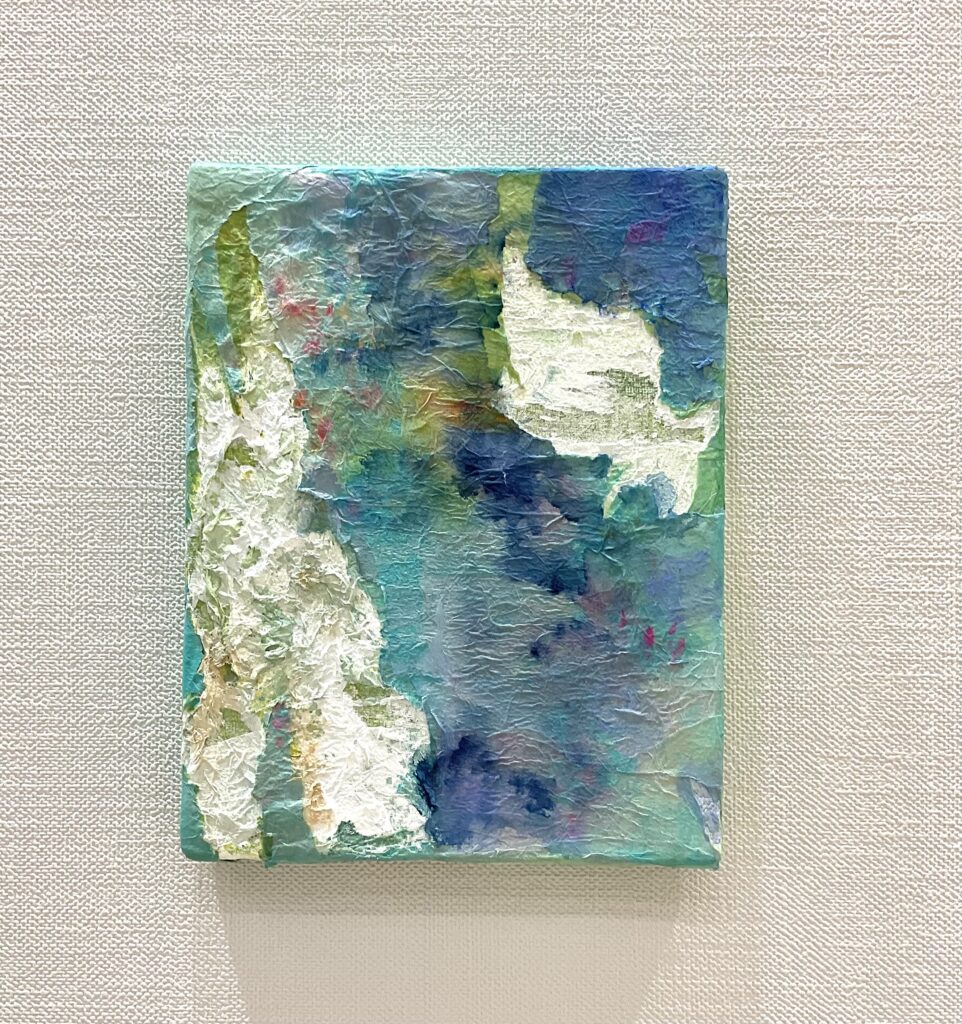
tissueと痕跡
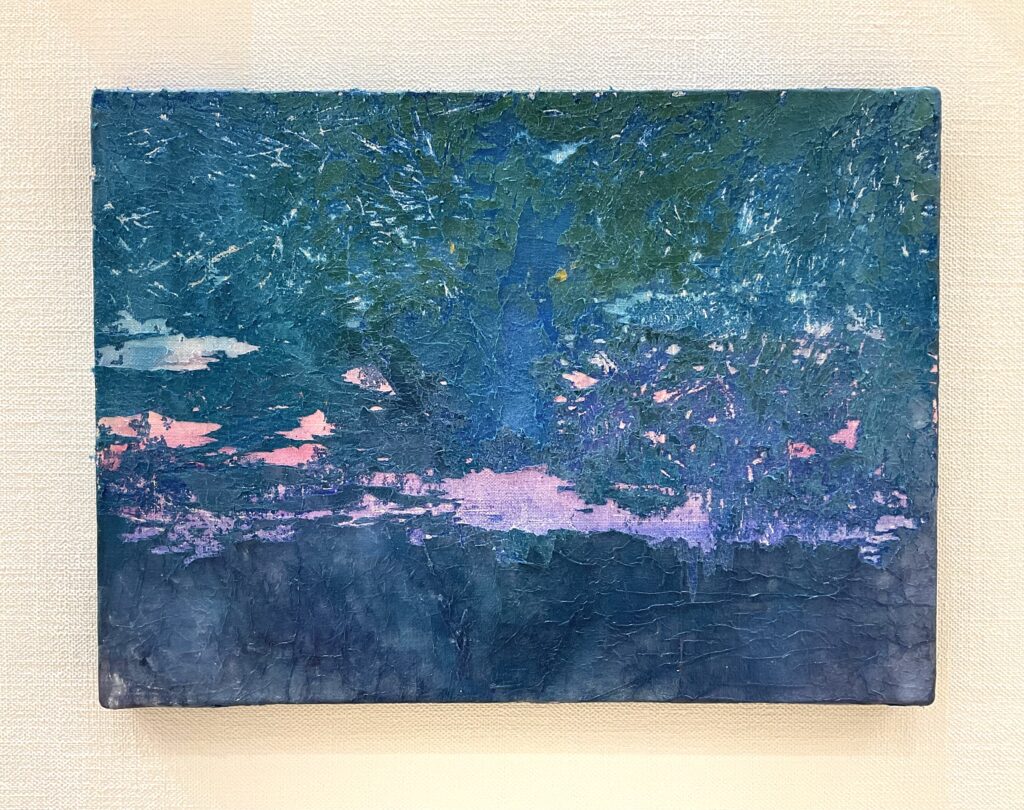
tissueと痕跡
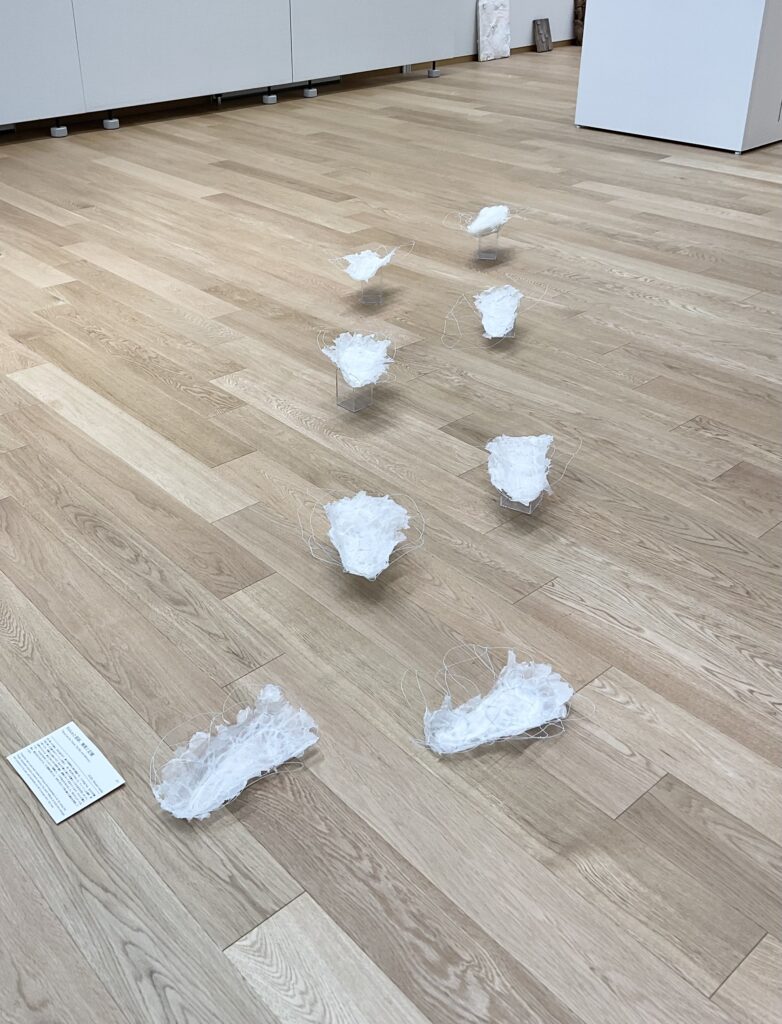
tissueと痕跡、触覚と記憶。

tissueと痕跡
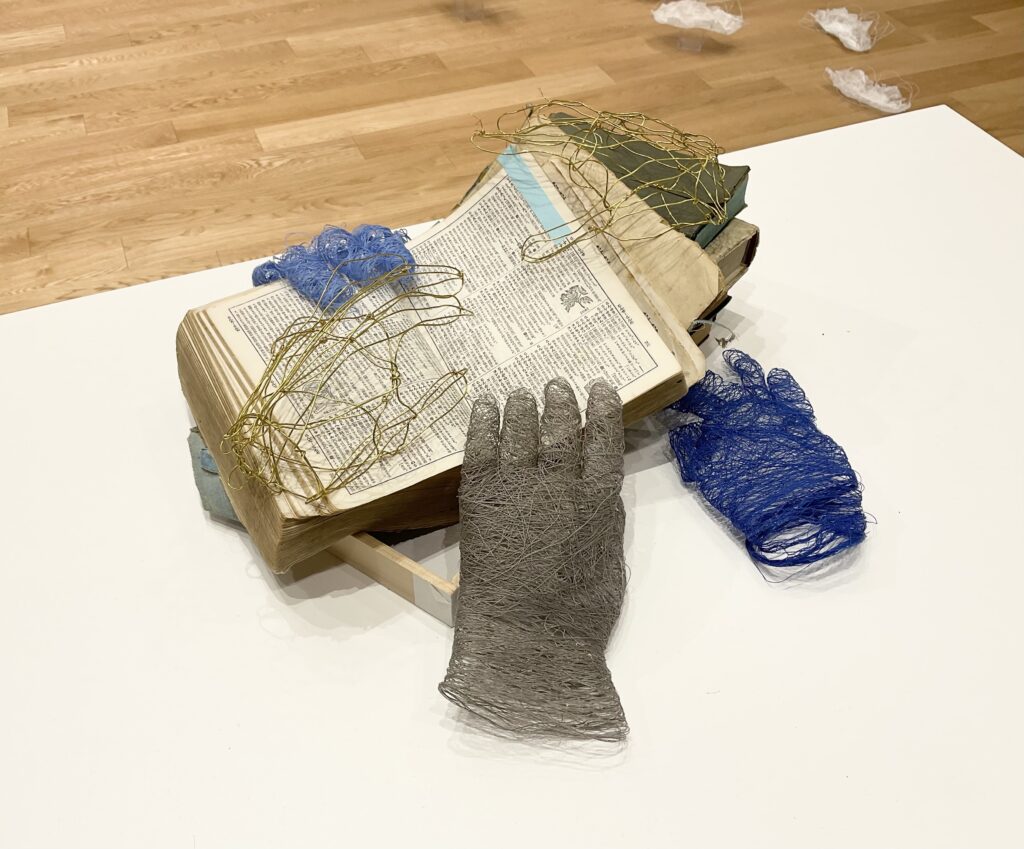
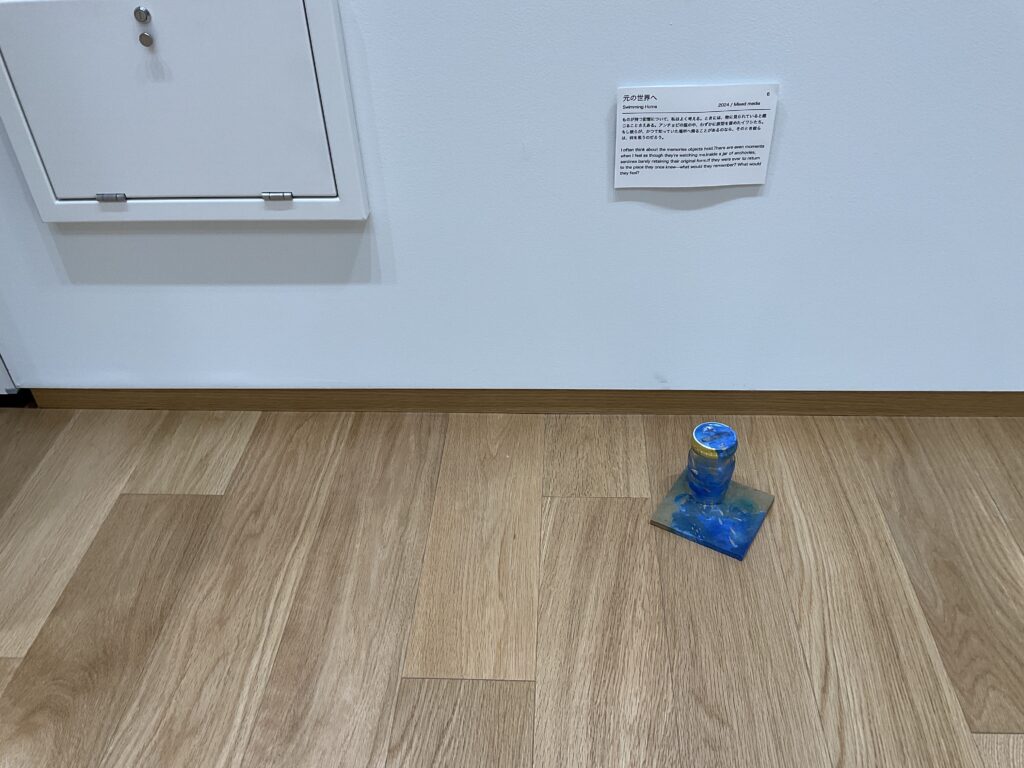
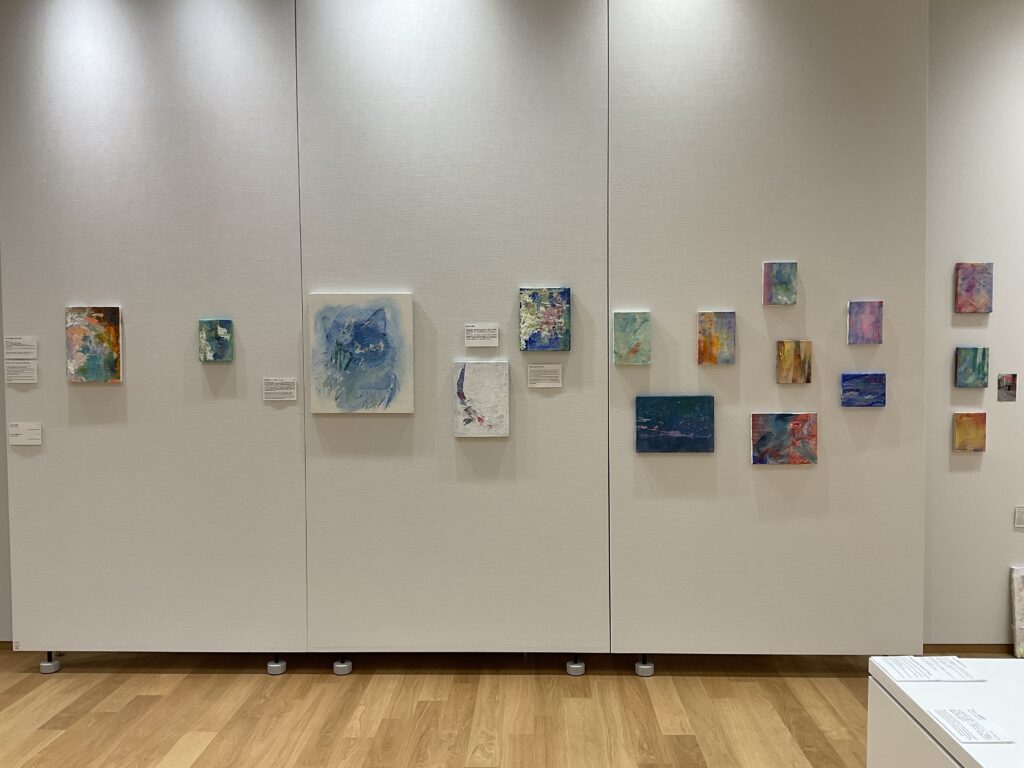
tissueと痕跡シリーズ全景
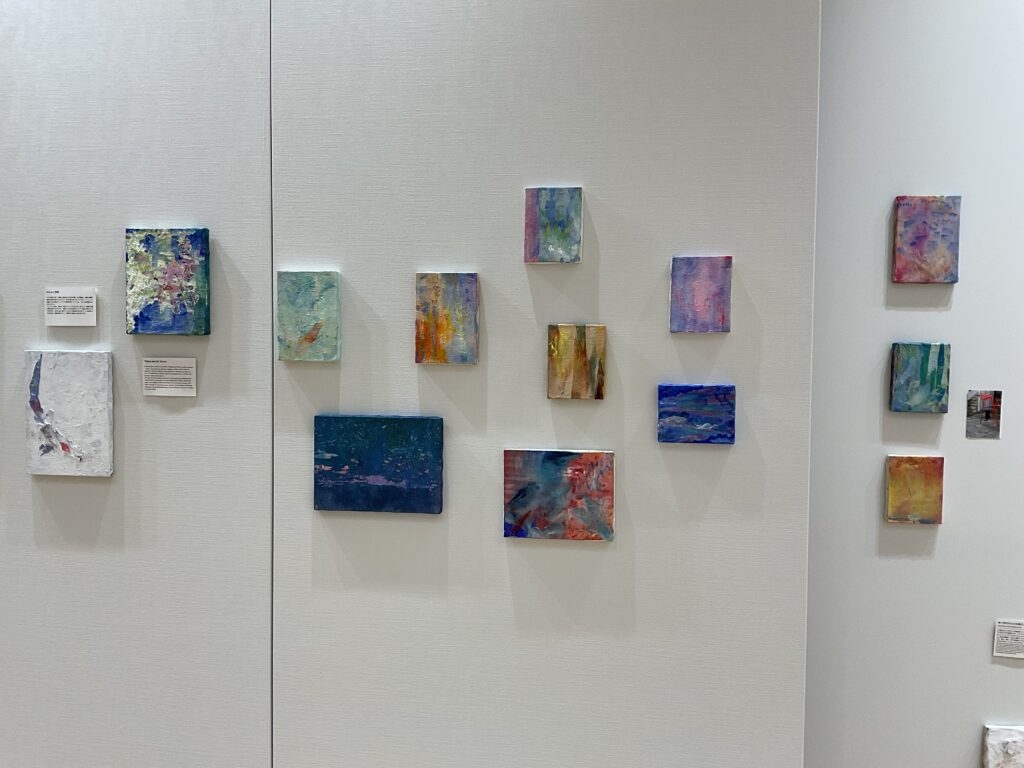
触覚と記憶
目で見たもの、耳で聞いたもの、手で触れたもの。私たちは、何かを認知するときに複数の感覚を使っている。けれど、目で見たことは本当に信じられるのか?耳で聞いたことは本当なのか? そう考えたとき、手で触れることで認識できるものこそが、もっとも現実味があるように感じられた。触覚こそが、もっとも信頼できる感覚なのではないかと考えた。
そして、「信頼できる」と感じるその感覚自体も、経験に基づいているのではないか――つまり、身体が記憶しているからこそ生まれるのではないかと考えるようになった。触覚と記憶のつながりを、私は確かめてみたいと思った。
Tactility and Memory
What we see with our eyes, hear with our ears, and feel with our hands―when we perceive something, we use multiple senses. But can we truly trust what we see? Can we be certain of what we hear? When I asked myself these questions, I realized that what I perceive through touch feels the most real. I began to think that touch might be the most reliable sense of all.
And then I wondered―this sense of “trust” I feel, doesn’t it come from experience? Perhaps it’s because the body remembers. That realization led me to explore the connection between touch and memory.
作品説明 / Artwork description
https://nosachika.jp/rtmot
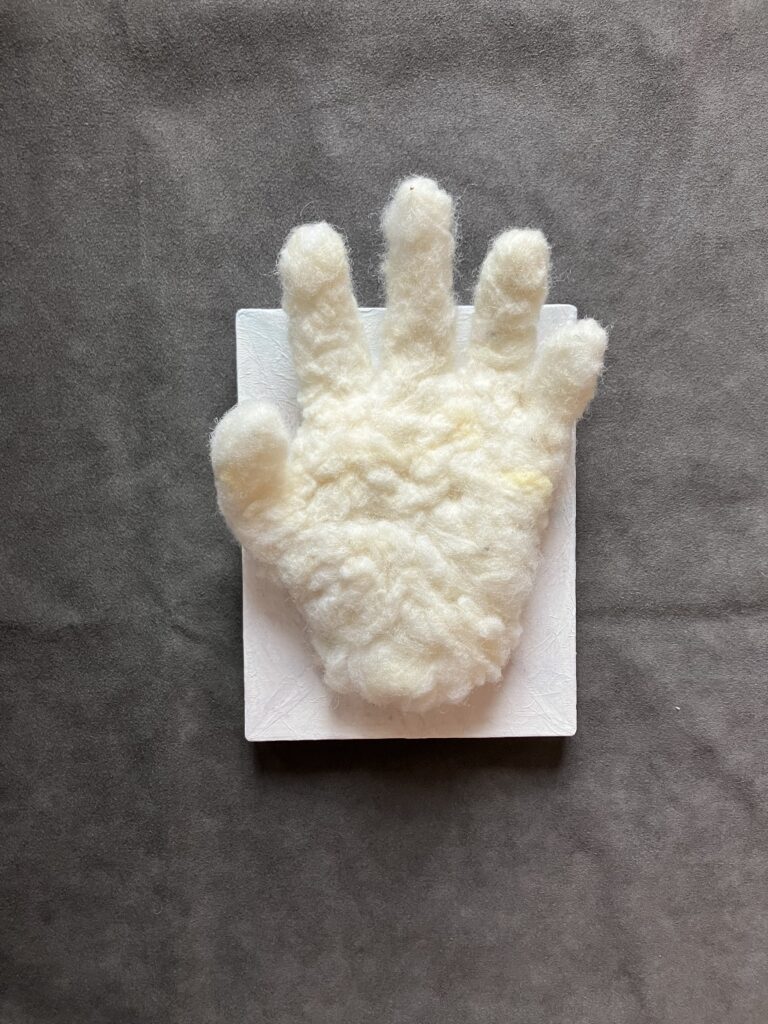
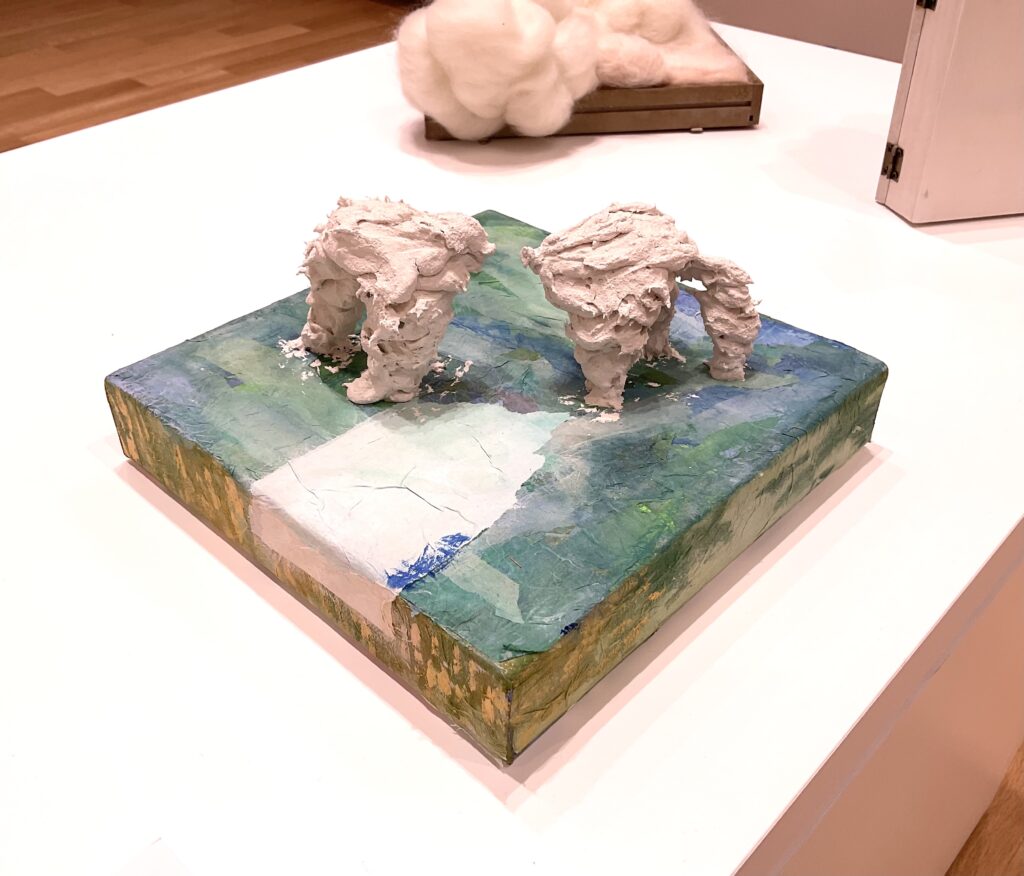
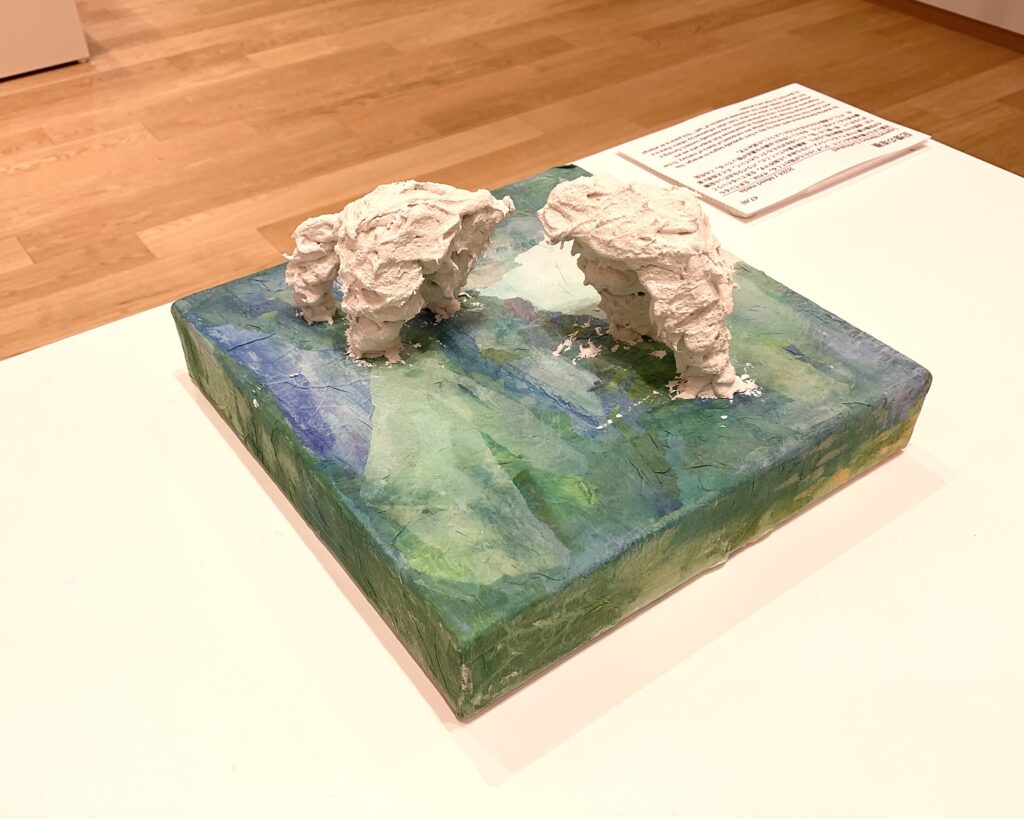
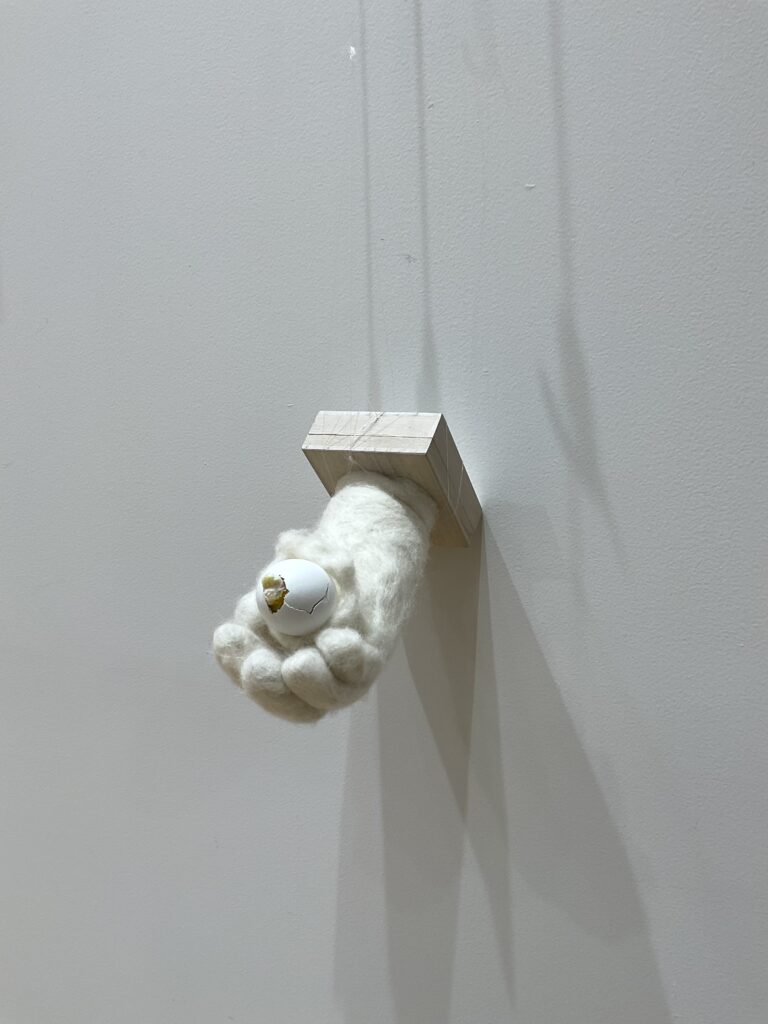
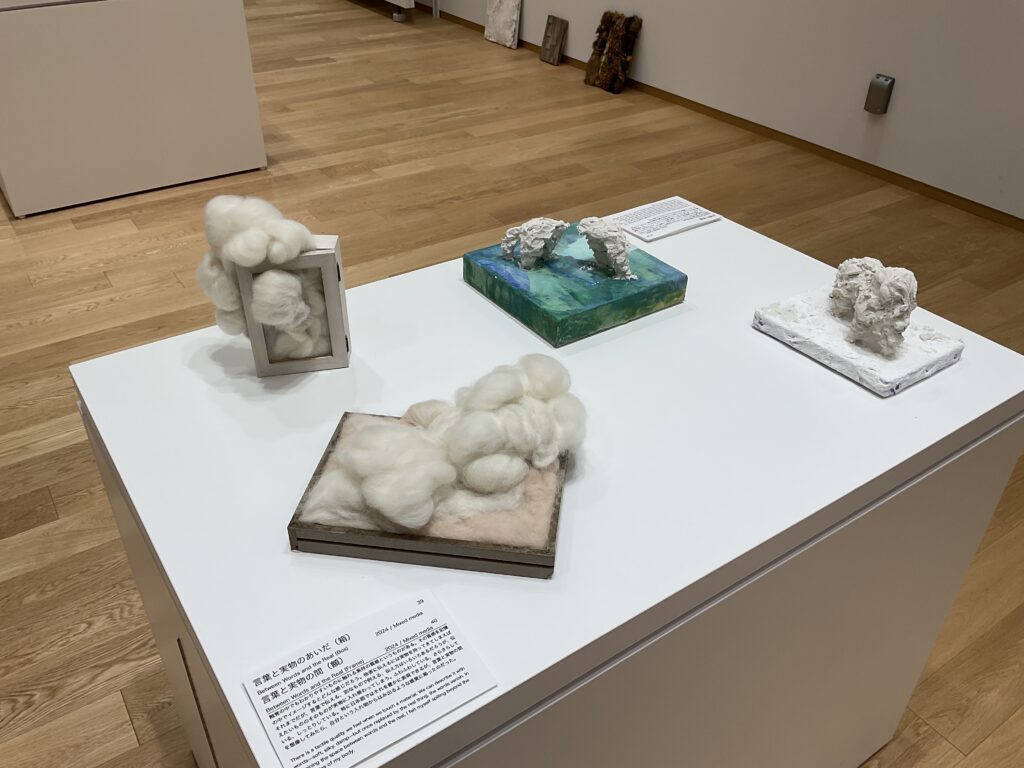
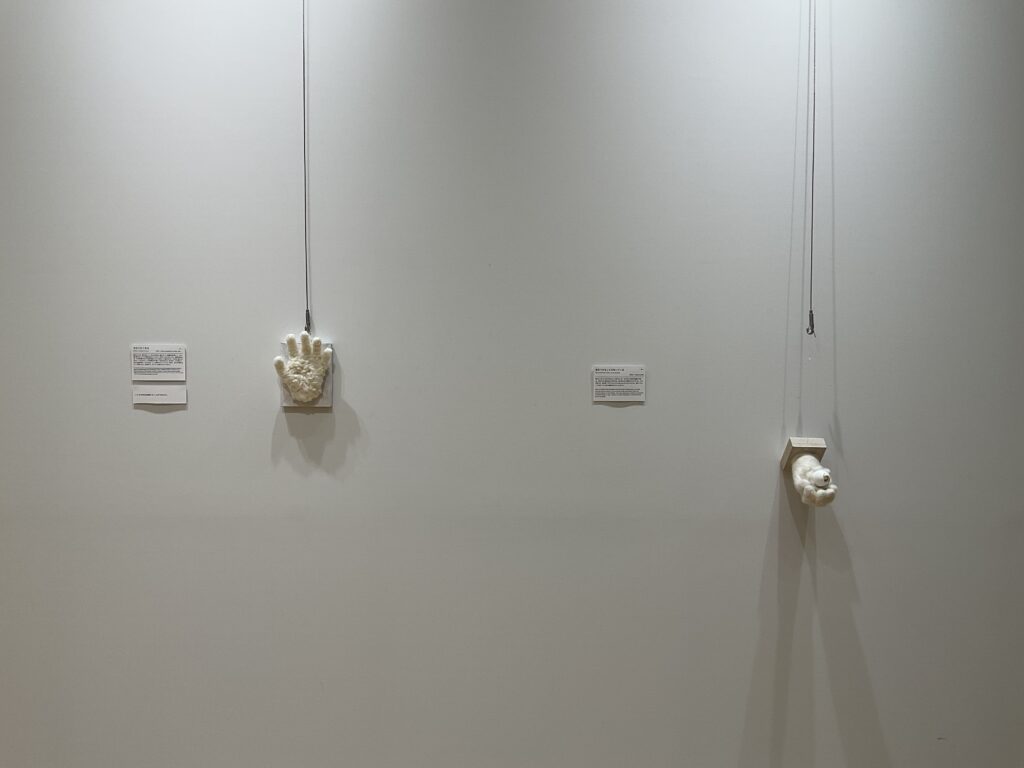
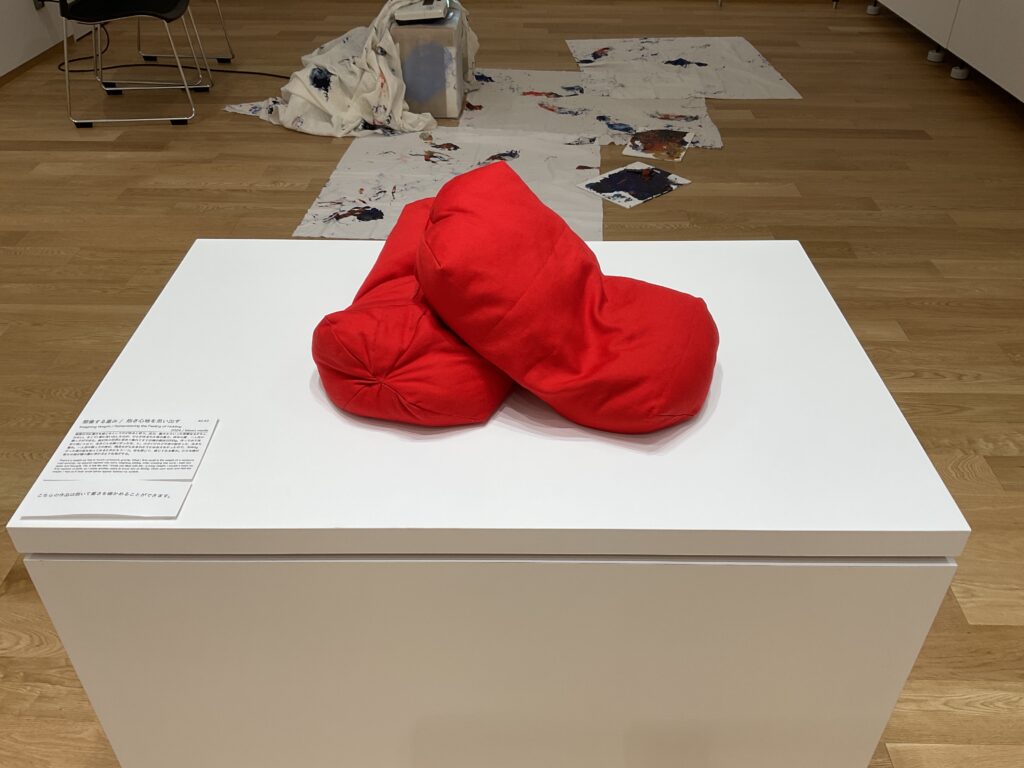
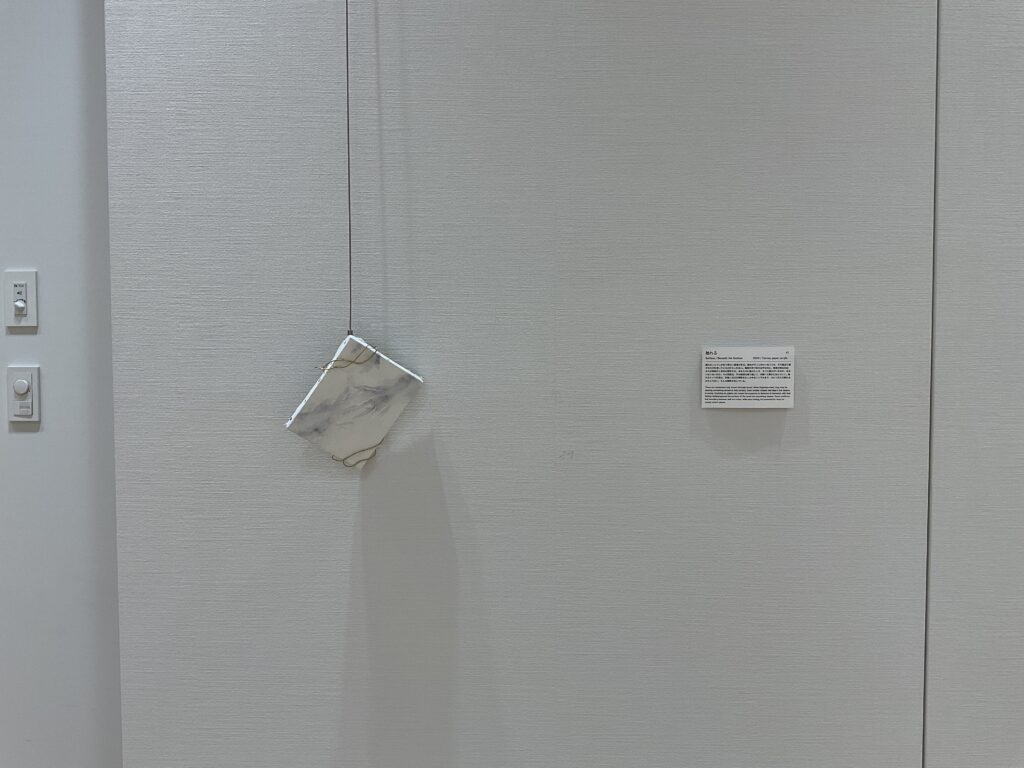
残る記憶、残らない痕跡
本作は、2024年5月にニューヨークで開催された「Breakthrough」というテーマのグループ展において、自身にとってのブレイクスルーとして制作した作品です。
これまで追求してきたティッシュペーパーという素材から一歩離れ、制作の核となっている「触覚と記憶」というテーマをあらためて形にするプロジェクトの一環です。手の触覚から生まれる感情の動きを自然に表現するうちに、「人の痕跡」そのものに関心が深まりました。人の痕跡には、ベッドに残る人の形のように長くとどまるものもあれば、砂浜の足跡のように、波によってすぐに消えてしまうものもあります。本作は、そうした痕跡から着想を得たものです。歩き続けることで重なっていく痕跡は、記憶に残るもの、そしてすぐに消えてしまうもの、それぞれの“強度”の違いを表しています。特に、波打ち際の足跡のように、「記憶としては残るけれど、痕跡としては残らない」ものに焦点を当てています。同じ場所を見つめ続け、足跡がついては消えていく——その繰り返しの中で、視覚的には消えていても、記憶にはしっかりと残るもの。実体のあるキャンバスに、映像という一時的なイメージを重ねることで、「残る痕跡」と「残らない痕跡」の両方を表しています。
Memories Remain, Traces Fade
This work was created as a personal breakthrough for a group exhibition in New York under the theme “Breakthrough,” held in May 2024. It marks a step away from the tissue paper material I had long explored, and is part of a project to revisit and rearticulate the core theme of my practice: “tactility and memory.” As I continued to express the emotional responses triggered by the sensation of touch, I gradually developed a deeper interest in human traces. Some traces remain for a long time, like the imprint of a body on a bed, while others vanish quickly, like footprints on the shore washed away by waves. This work draws inspiration from such fleeting and enduring traces. The accumulation of traces through repeated walking represents the varying intensities of what is remembered and what disappears. In particular, I focused on the type of trace that remains in memory but not in physical form—like footprints by the sea. Even as they vanish from sight, the repetition of these marks imprints something in the memory. By layering ephemeral video imagery onto the physical surface of a canvas, this work expresses both the traces that remain and those that do not.
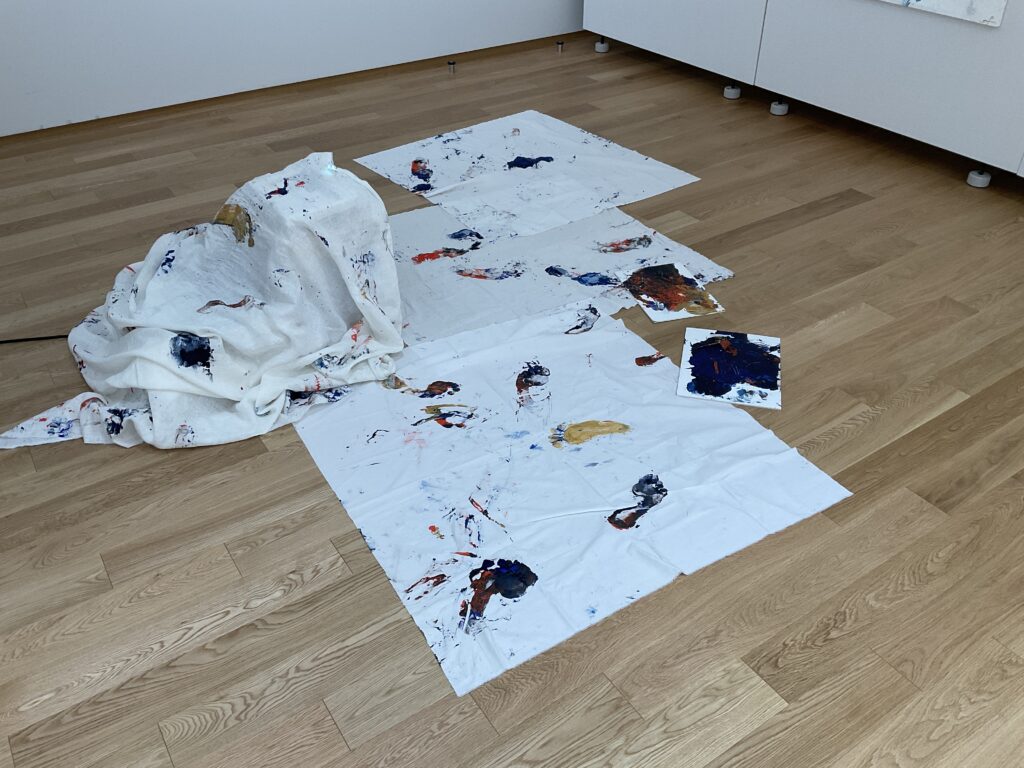
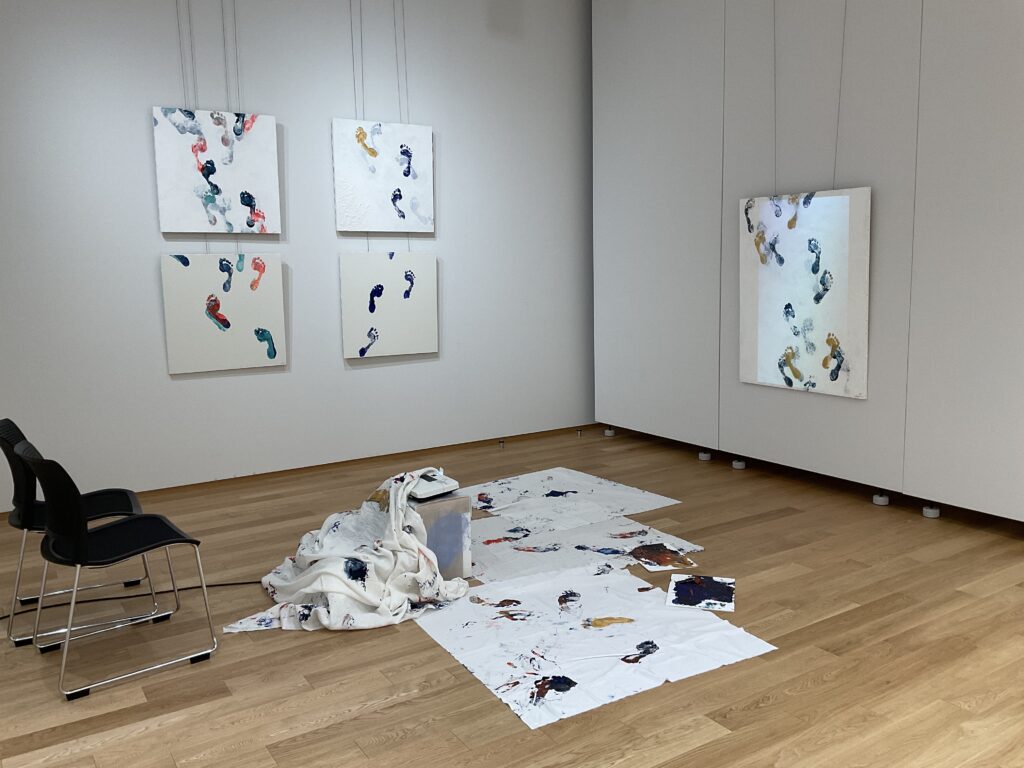
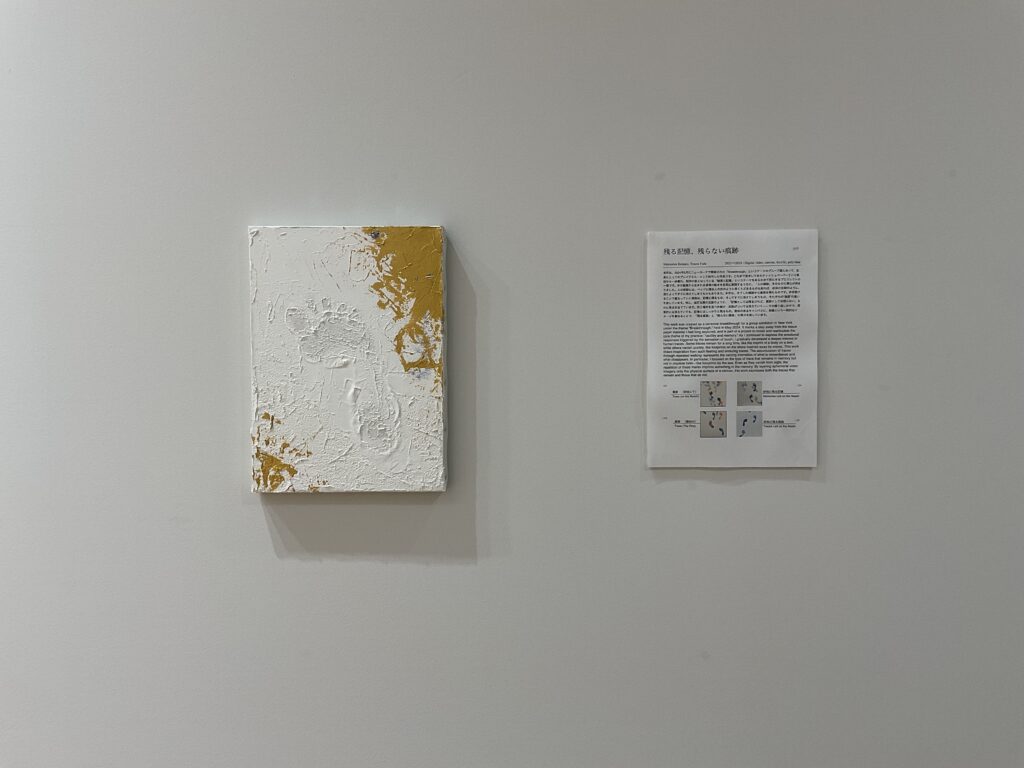
触覚は触り方次第、触れ方次第。触り方が変われば、対象から引き出される性質が変わる。触る(さわる)と 触れる(ふれる)には大きな違いがあると思うのだ。
「ギリシャの猫たち」
ギリシャ旅行での出来事からドローイングにも取り組んでいます。2023年10月、旧友を訪ねてギリシャへ向かいました。そこで思いがけず出会ったのが、町中にあふれる自由気ままな猫たち。人間の目線とは違う日常を生きる彼らの姿に惹かれ、気づけば風景よりも猫を追いかけていました。
猫を描くという行為には、昔から多くの芸術家たちが魅了されてきたように、どこか特別な意味があります。「描く」と「猫(ねこ)」の漢字が似ていることにも、どこか不思議なつながりを感じています。
The Cats of Greece
My recent drawing series was inspired by a trip to Greece.
In October 2023, I traveled there to visit an old friend―and unexpectedly encountered a town full of free-spirited cats. Roaming the streets and blending seamlessly into daily life, they seemed to live a reality entirely different from our own. Before I knew it, I found myself more drawn to the cats than to the scenery.
The act of drawing cats has long held a special meaning, captivating many artists throughout history. I also sense a mysterious connection in how the kanji for “to draw” (描く) and “cat” (猫) resemble each other.
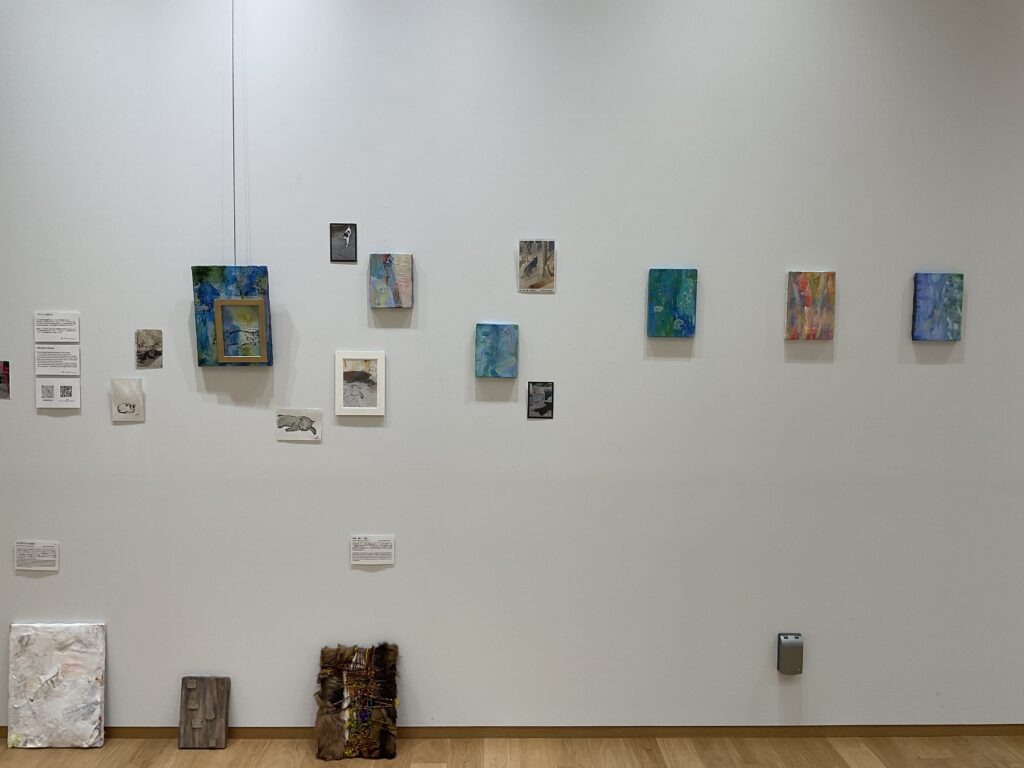
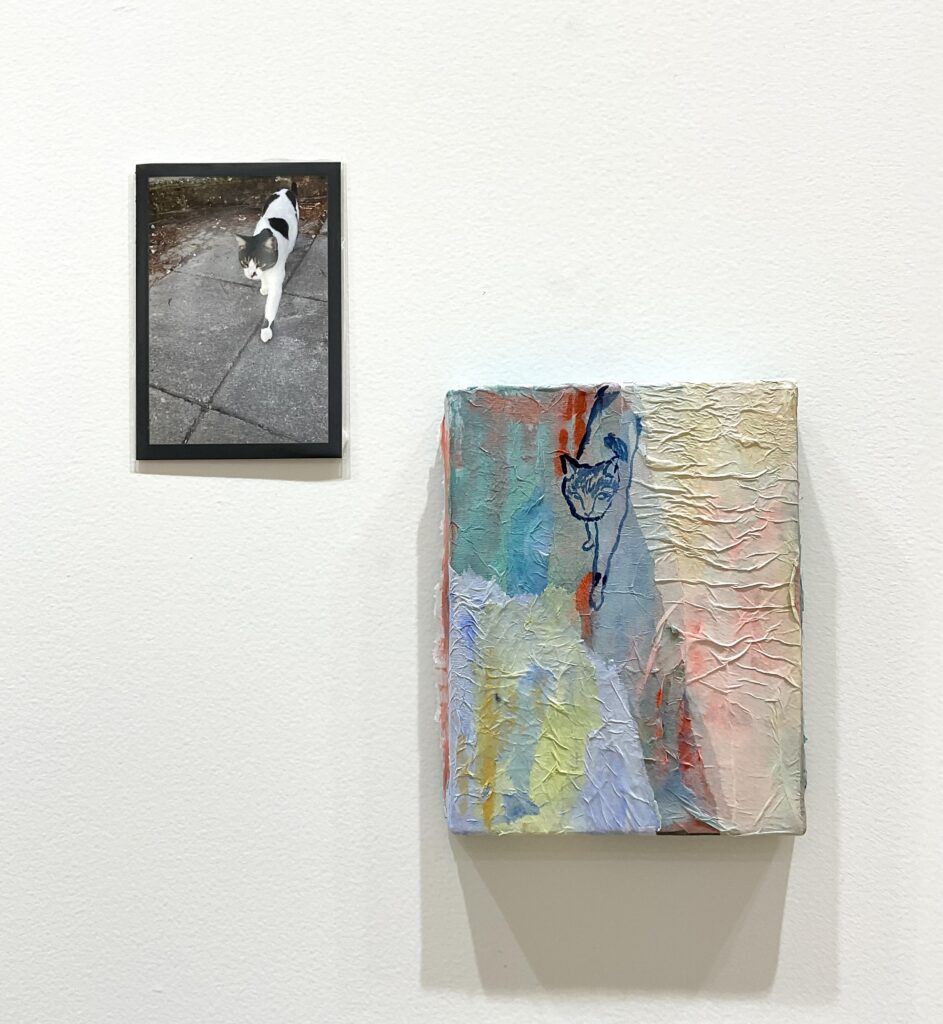
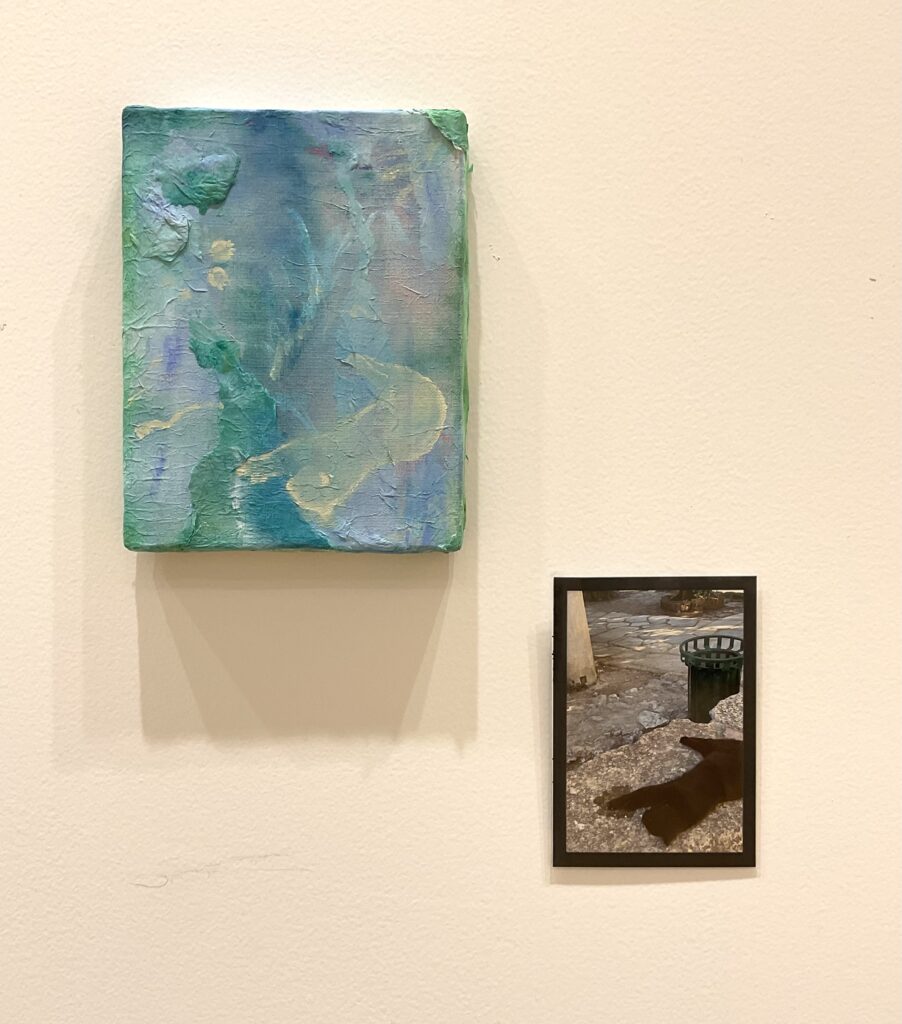
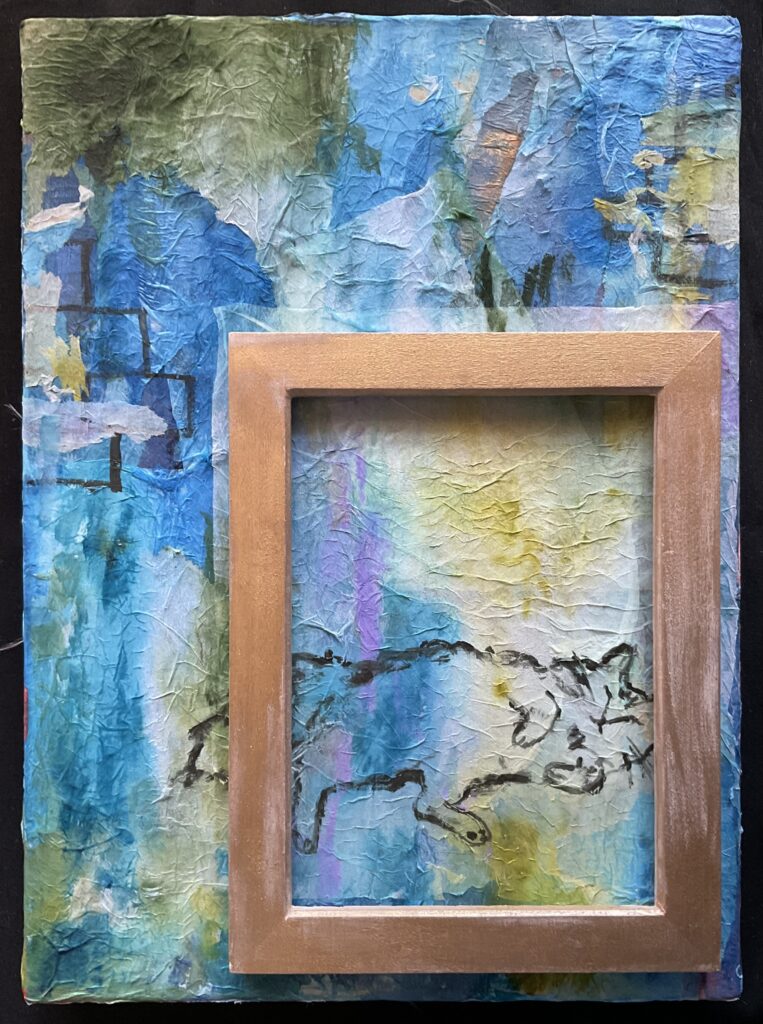
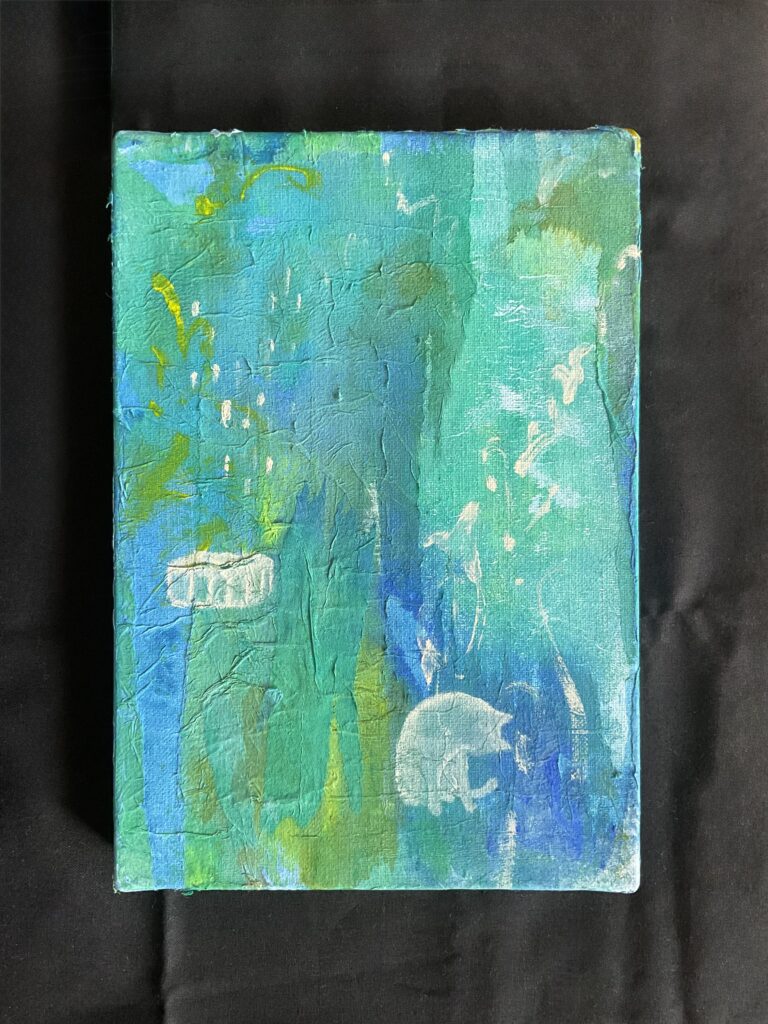
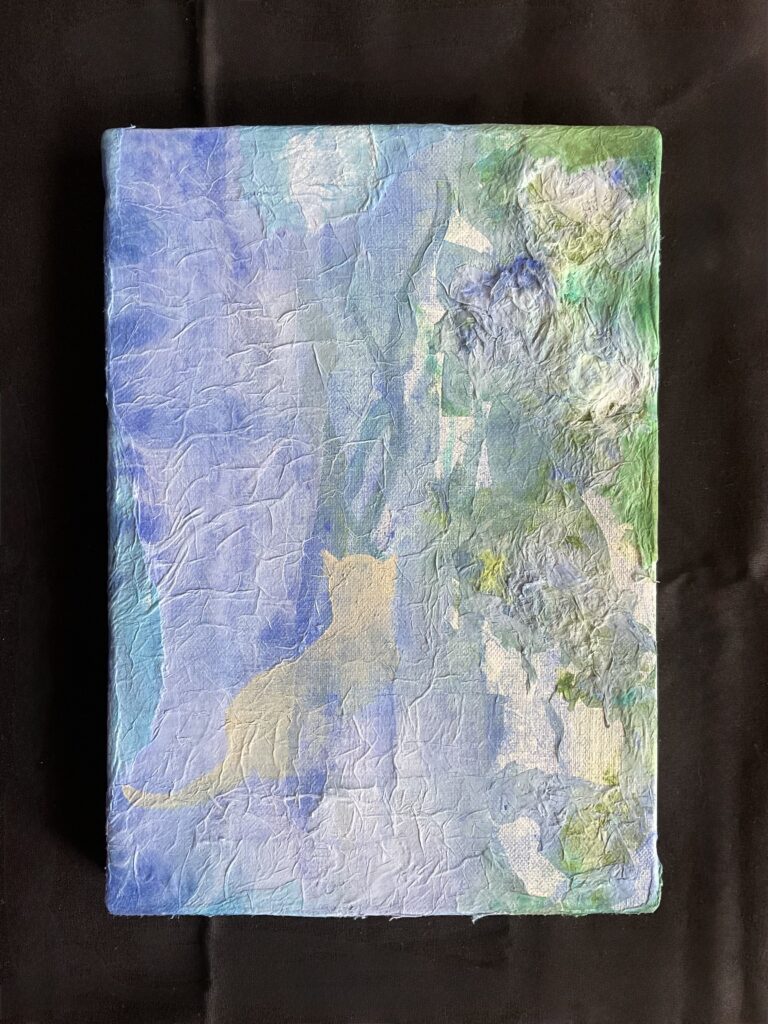
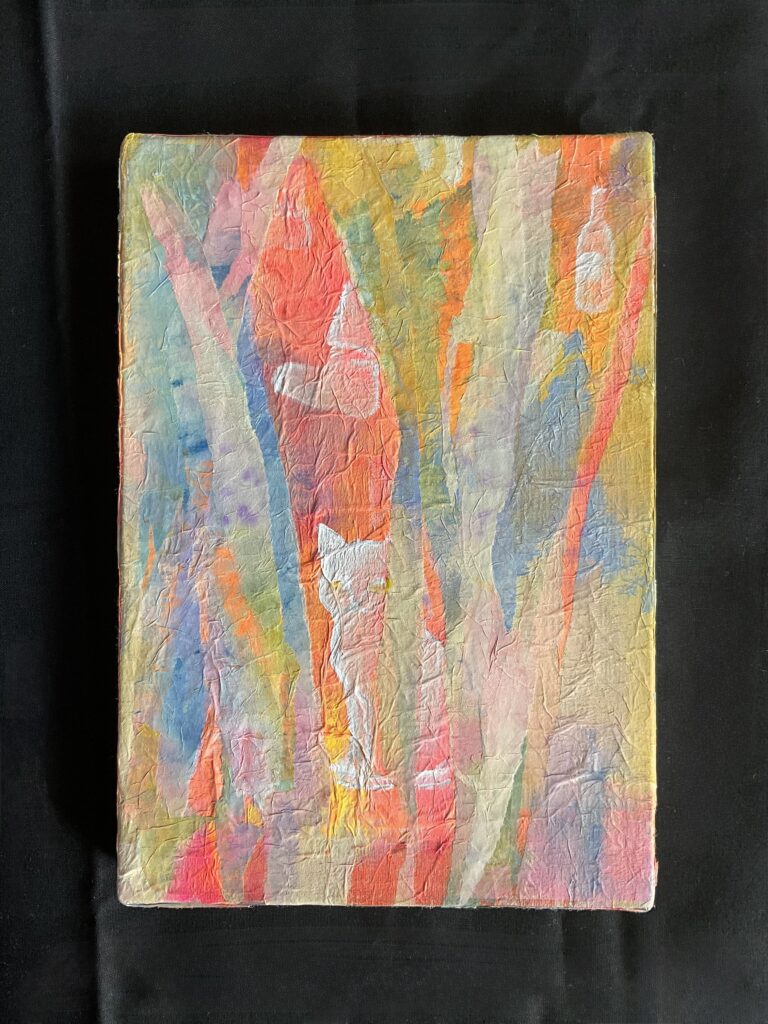
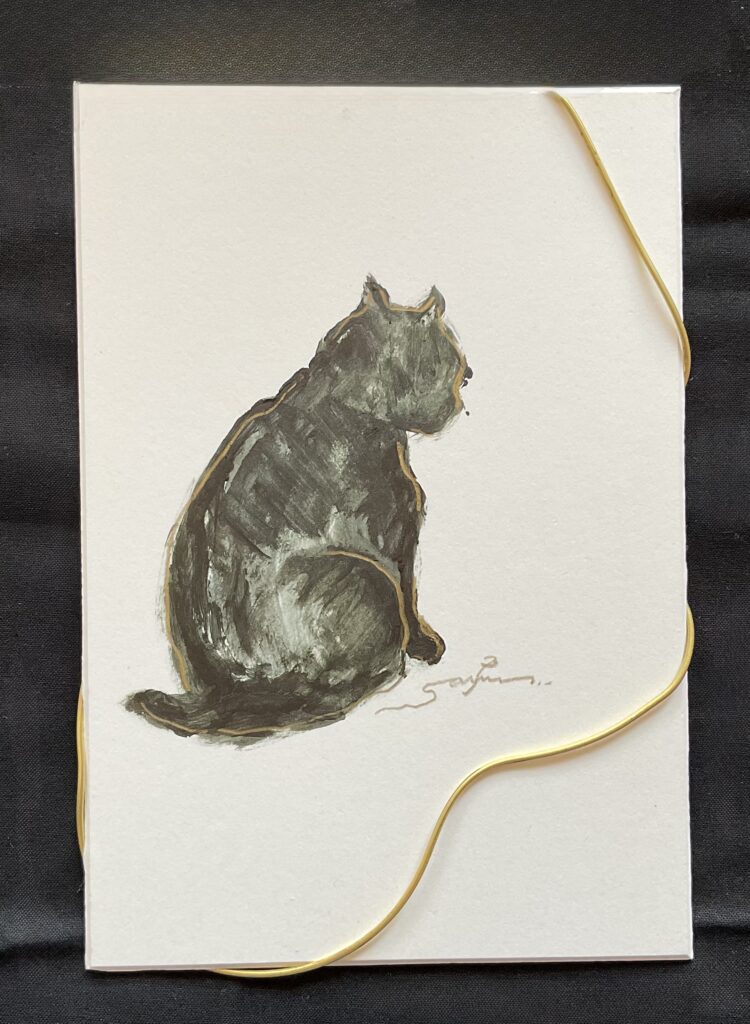
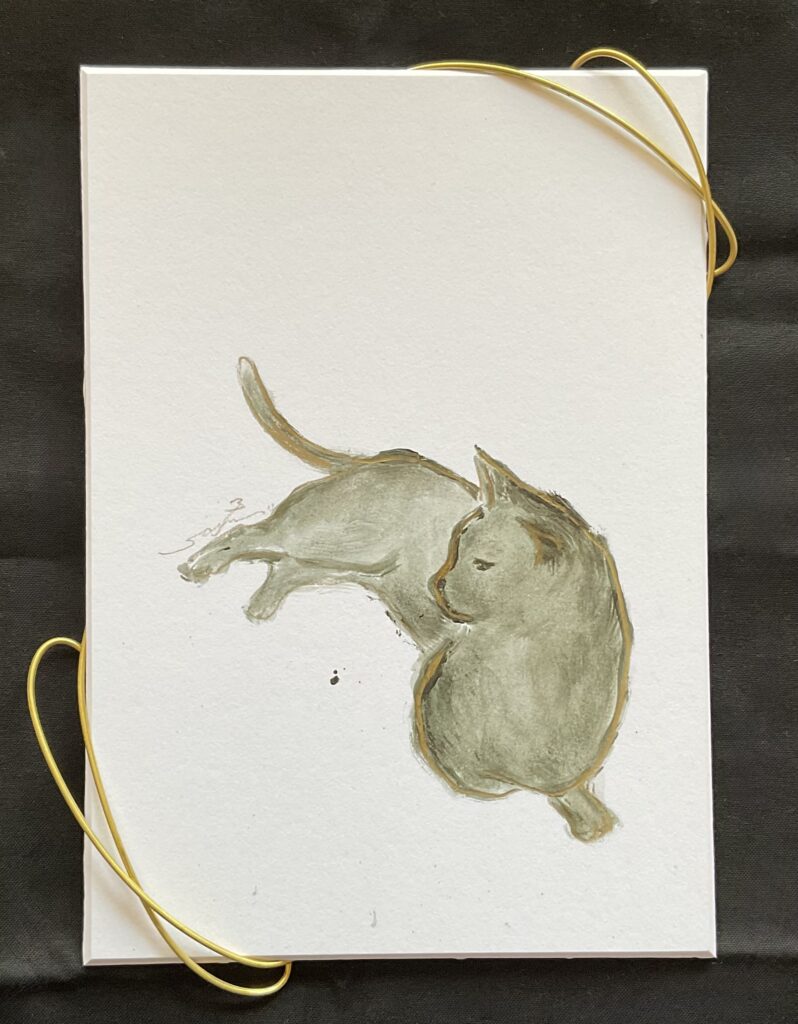
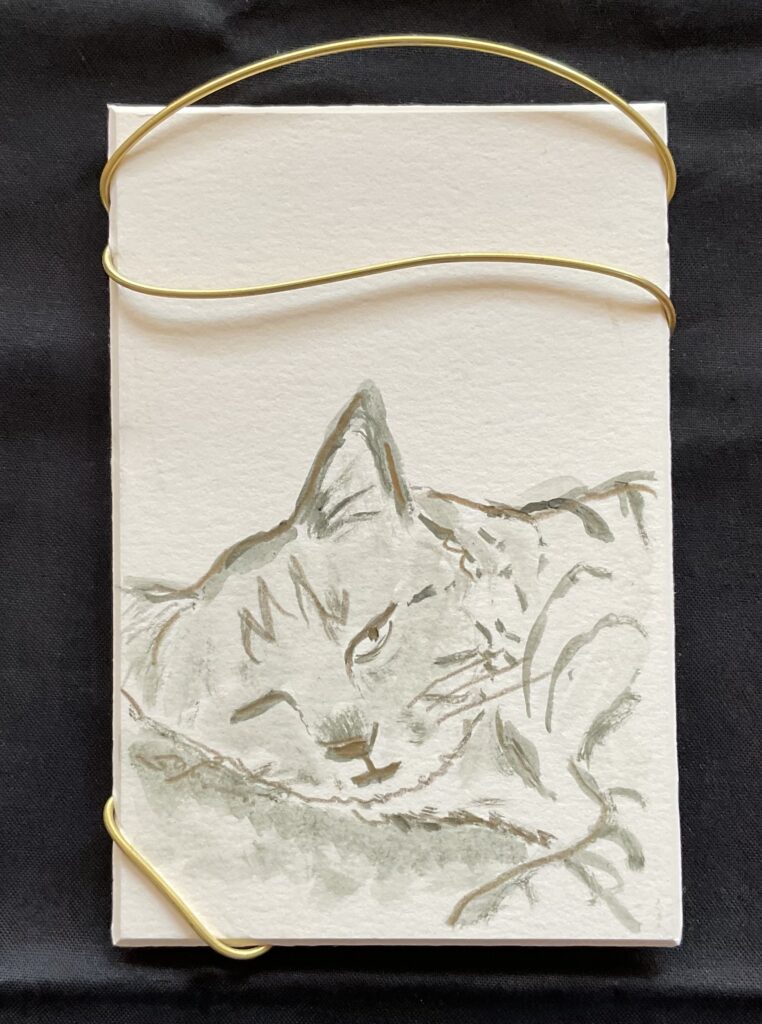
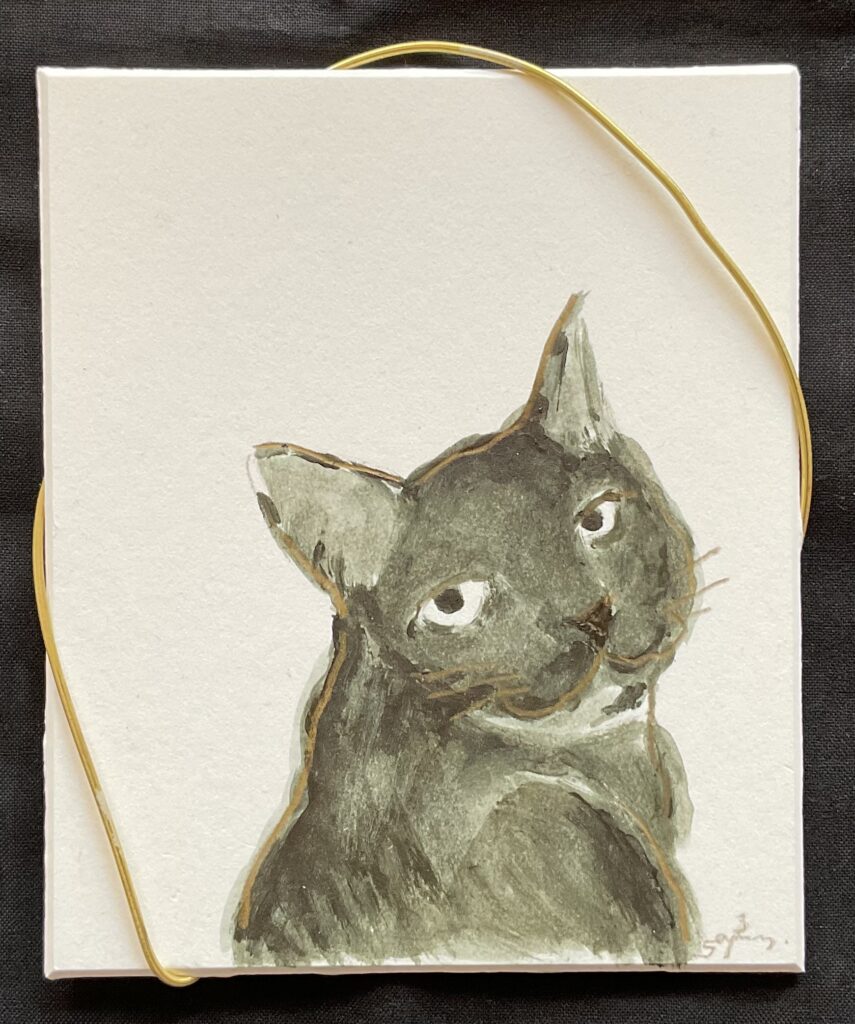
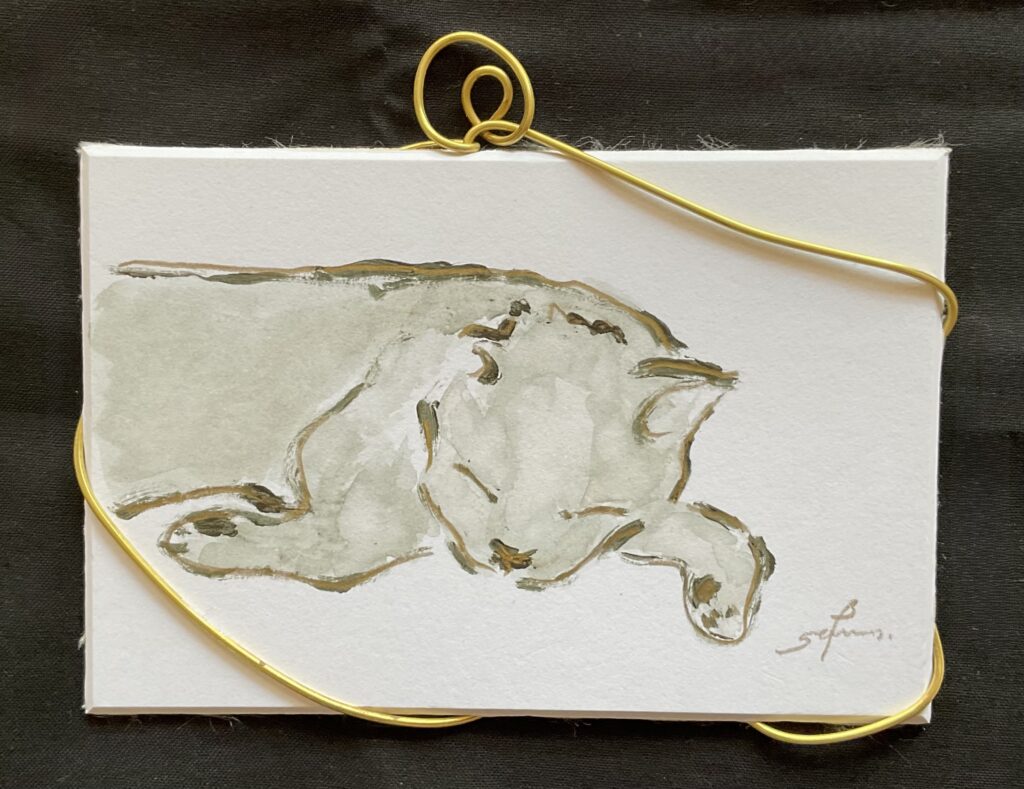

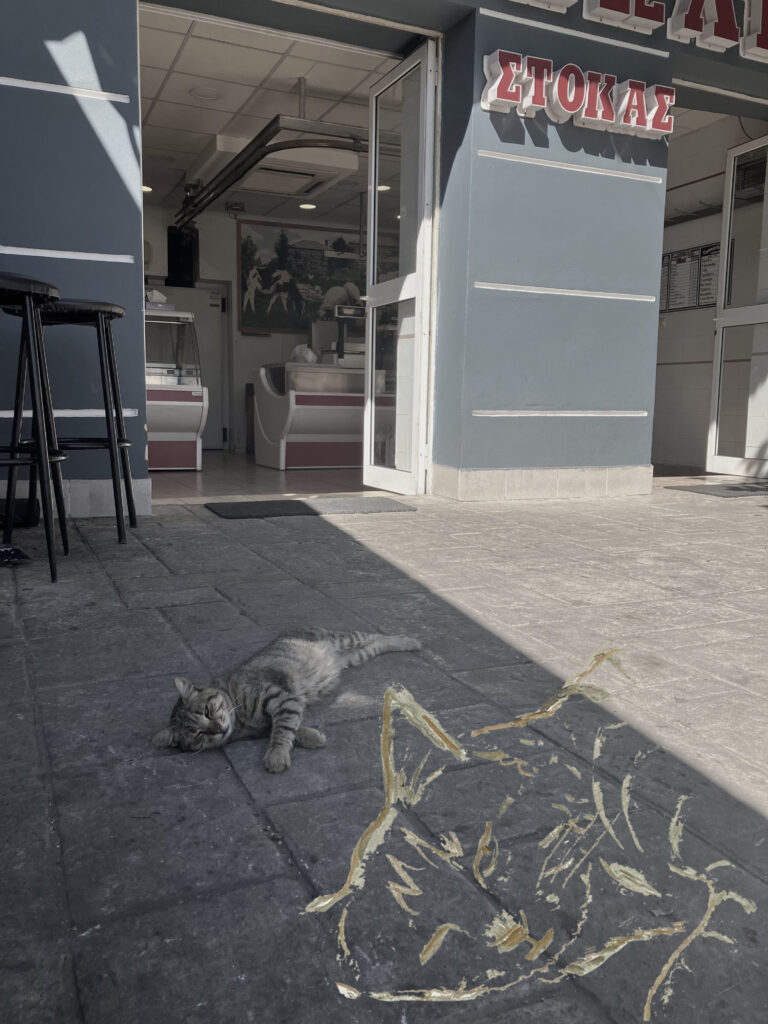
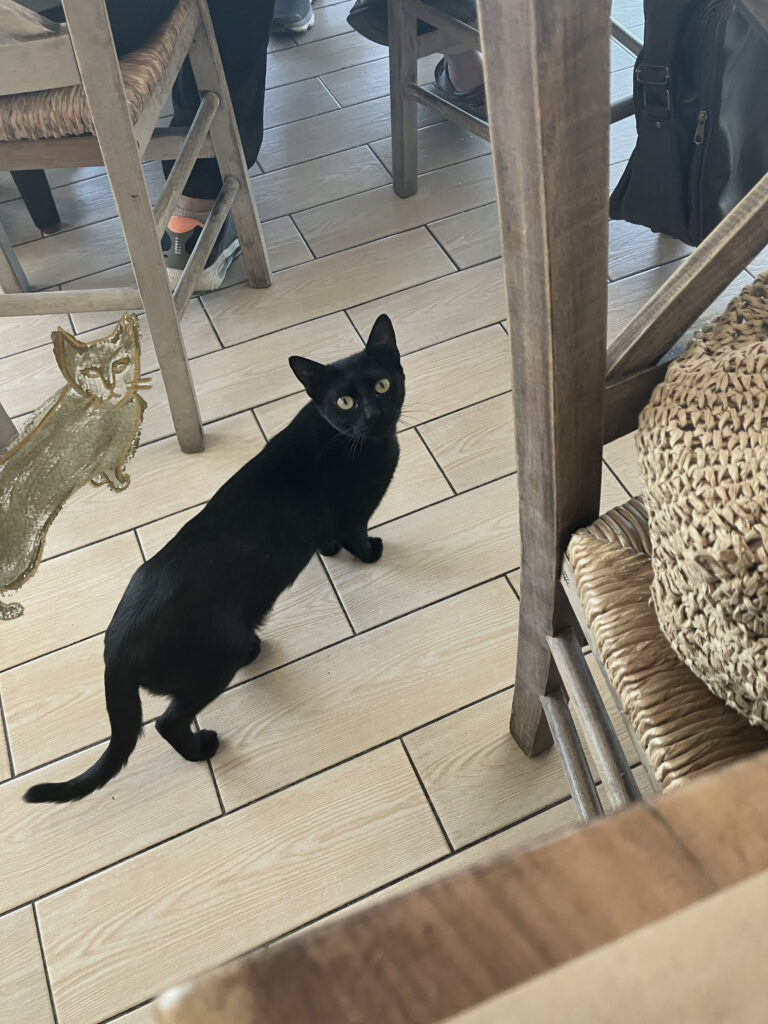
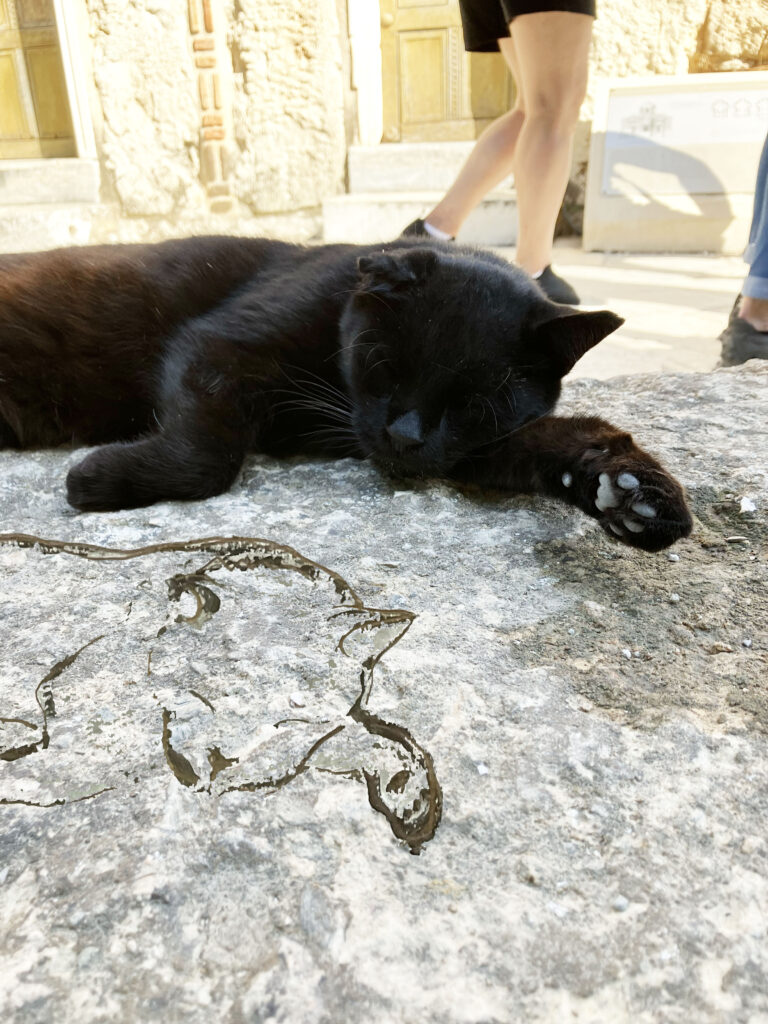
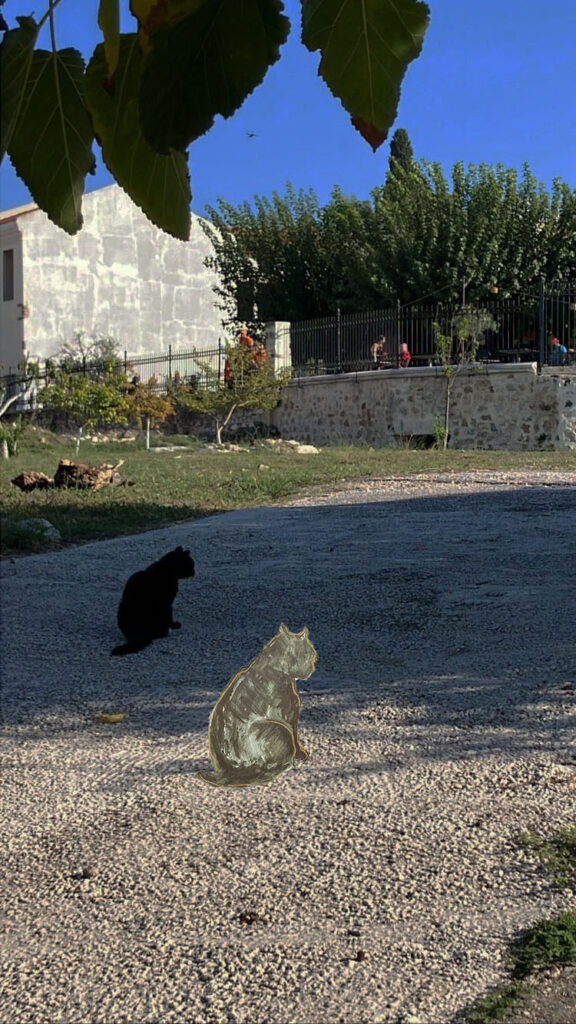
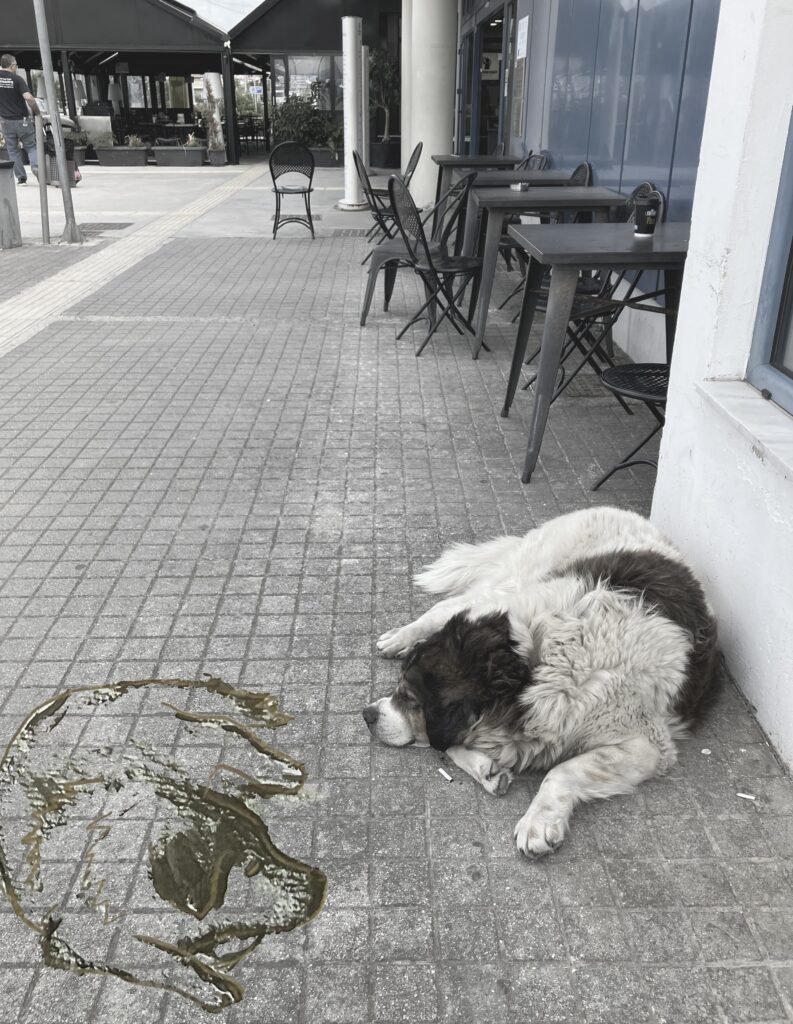
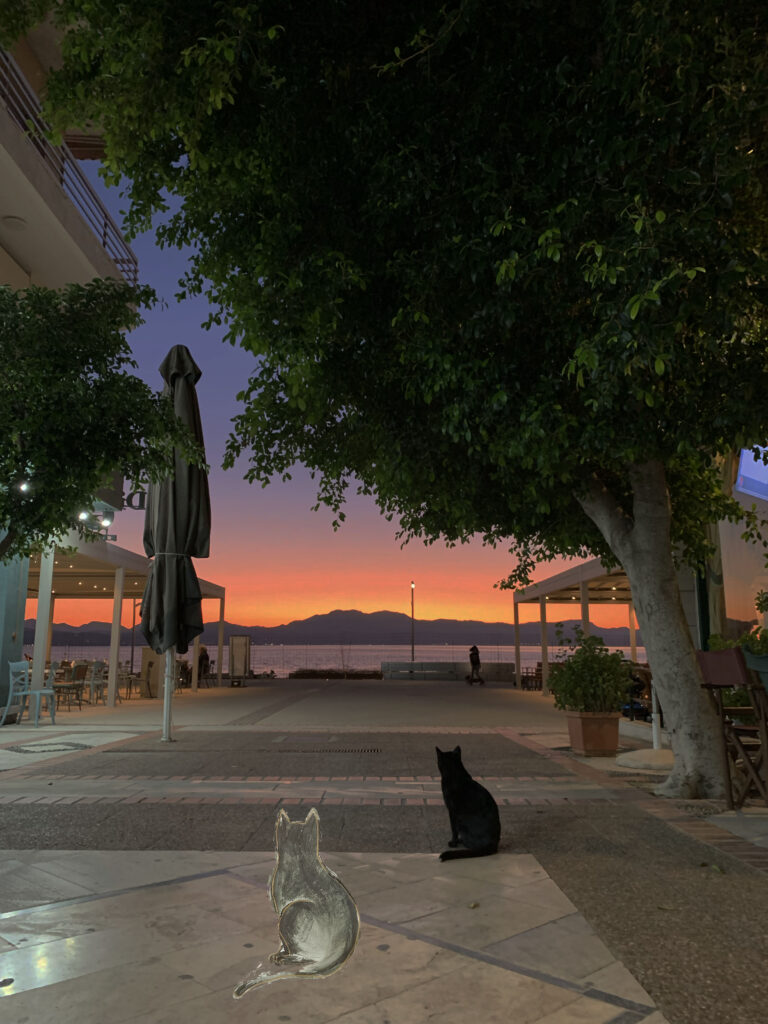
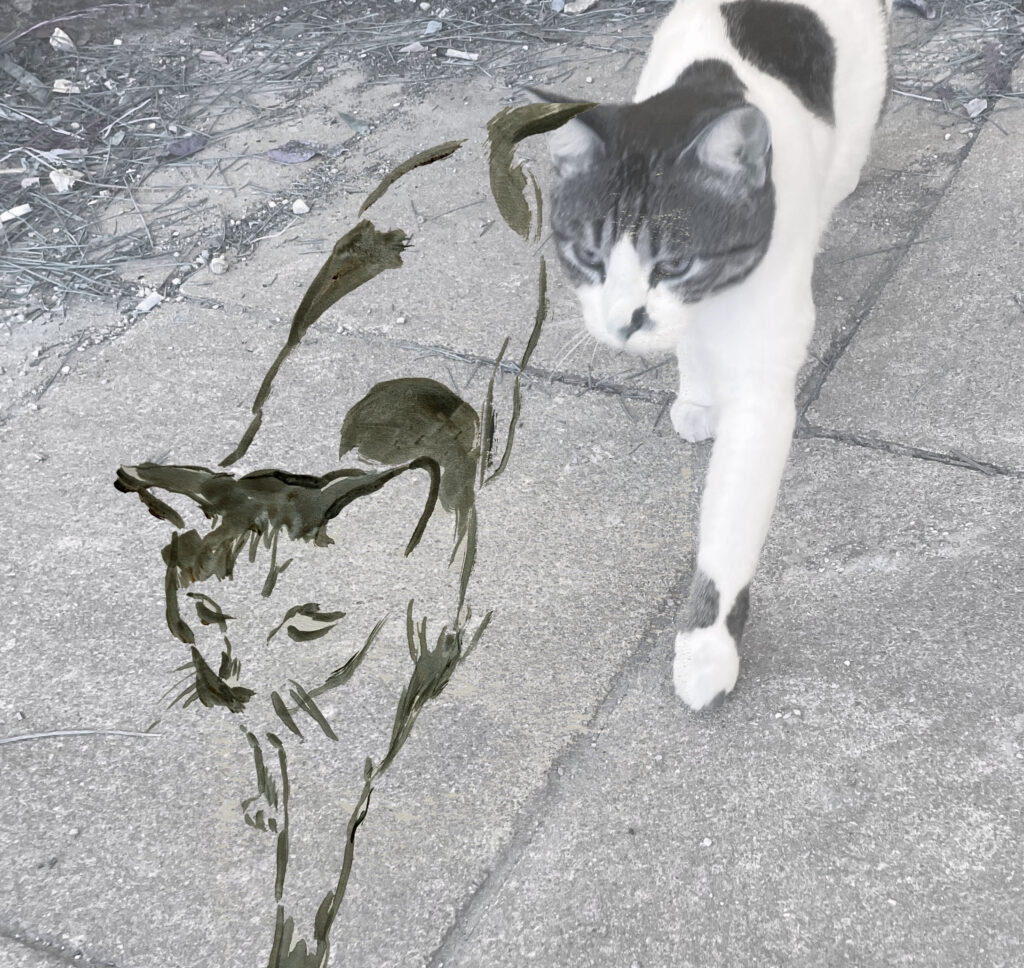
まとめ
期間中、のべ300名近くの方にお立ち寄りいただきました。
たくさんのご来場ありがとうございます。
ティッシュで制作していること自体に関心を寄せていただき、身近な素材ゆえの面白さ、想像力を刺激されるようで、さまざまなご感想をいただき嬉しく思います。
これから、どのような道を辿るのか私自身わかりませんが、一歩ずつ、しっかりと確かめながら進んでまいります。また次の機会、ぜひご期待ください。
Over the course of the exhibition, nearly 300 people stopped by. Thank you so much for visiting. I was truly happy to hear so many impressions — how working with something as familiar as tissue sparked curiosity and stirred the imagination. I’m not yet sure what path lies ahead for me, but I’ll continue taking one step at a time, carefully and thoughtfully. I look forward to seeing you again at the next opportunity.
